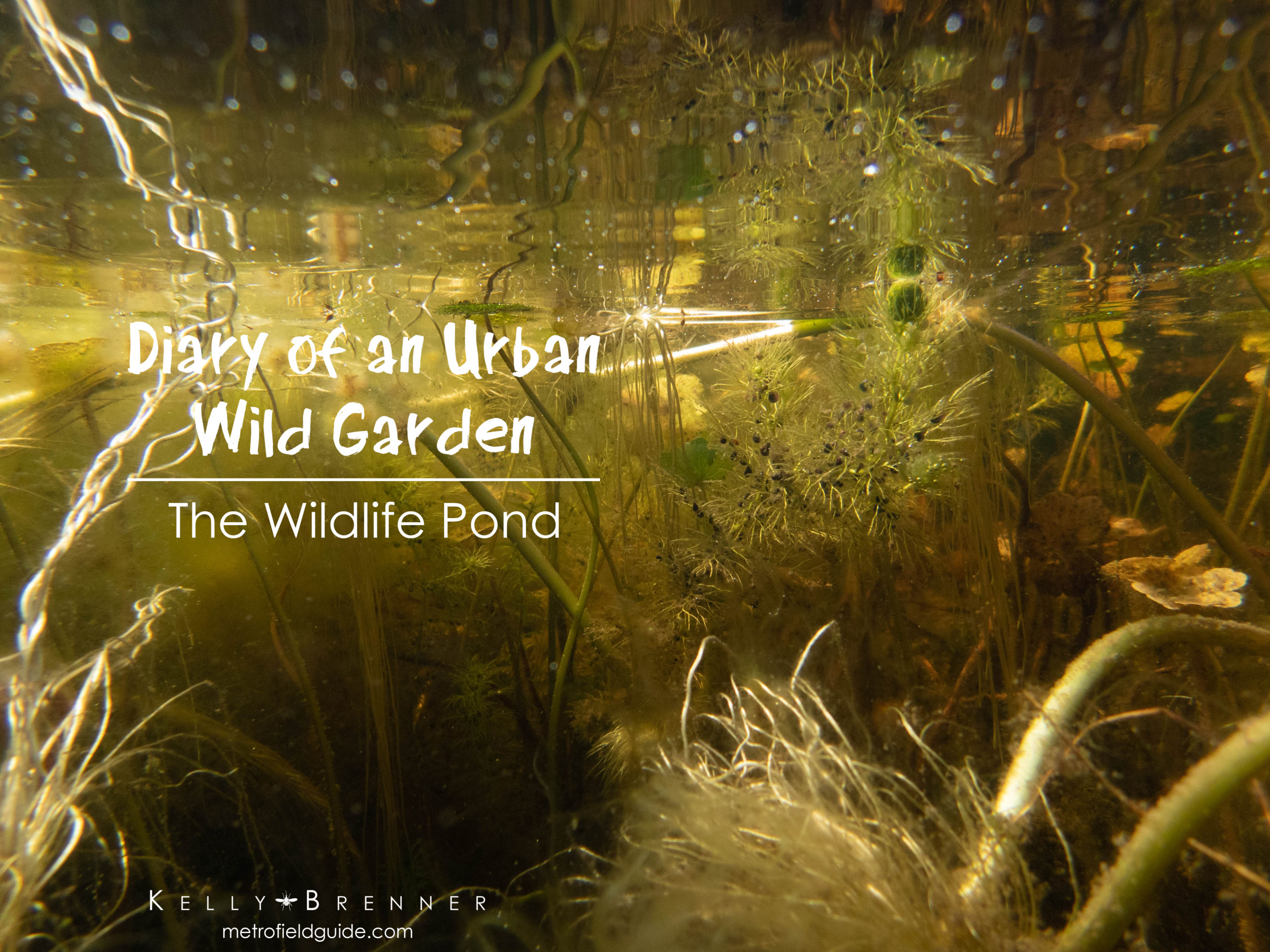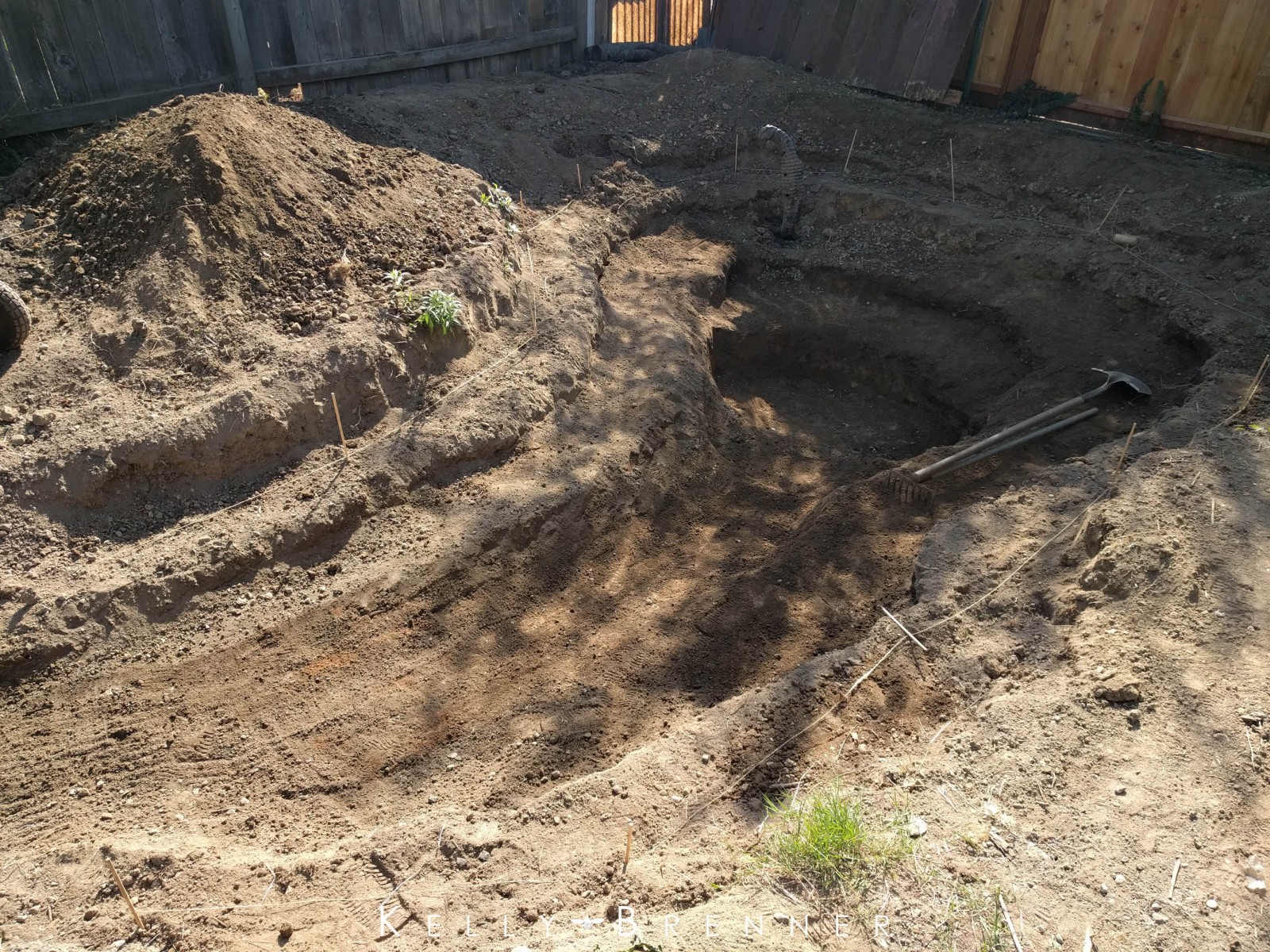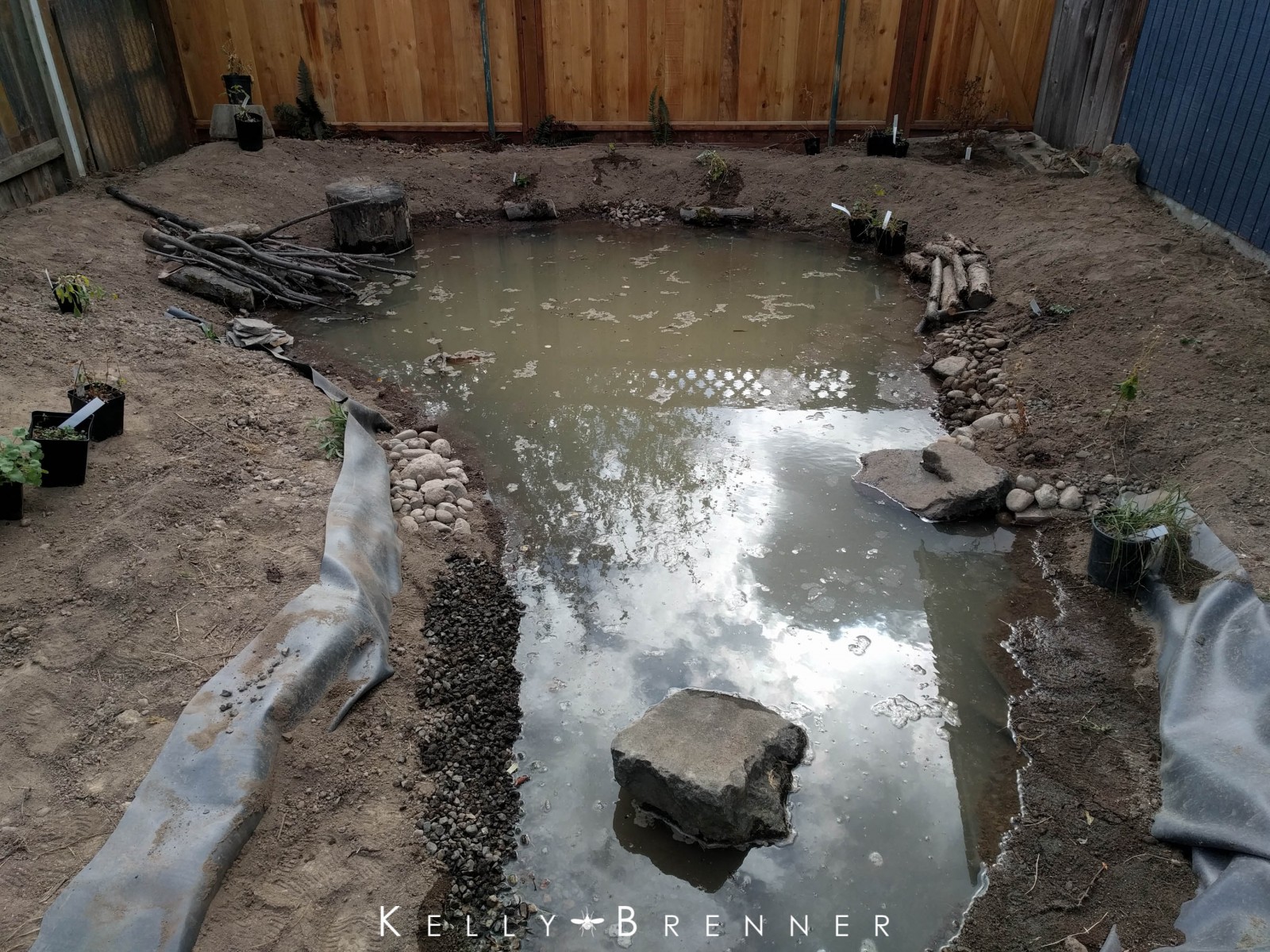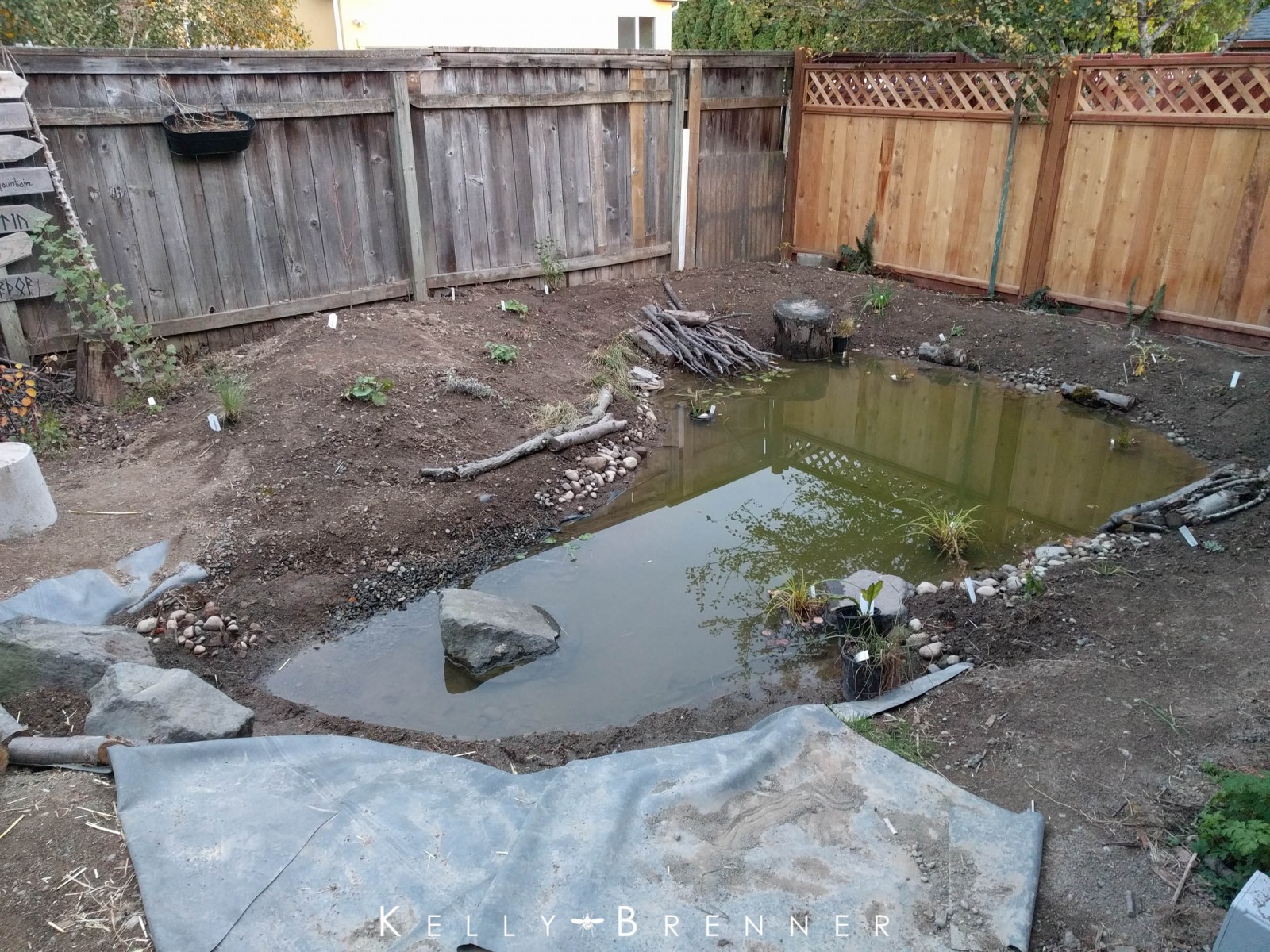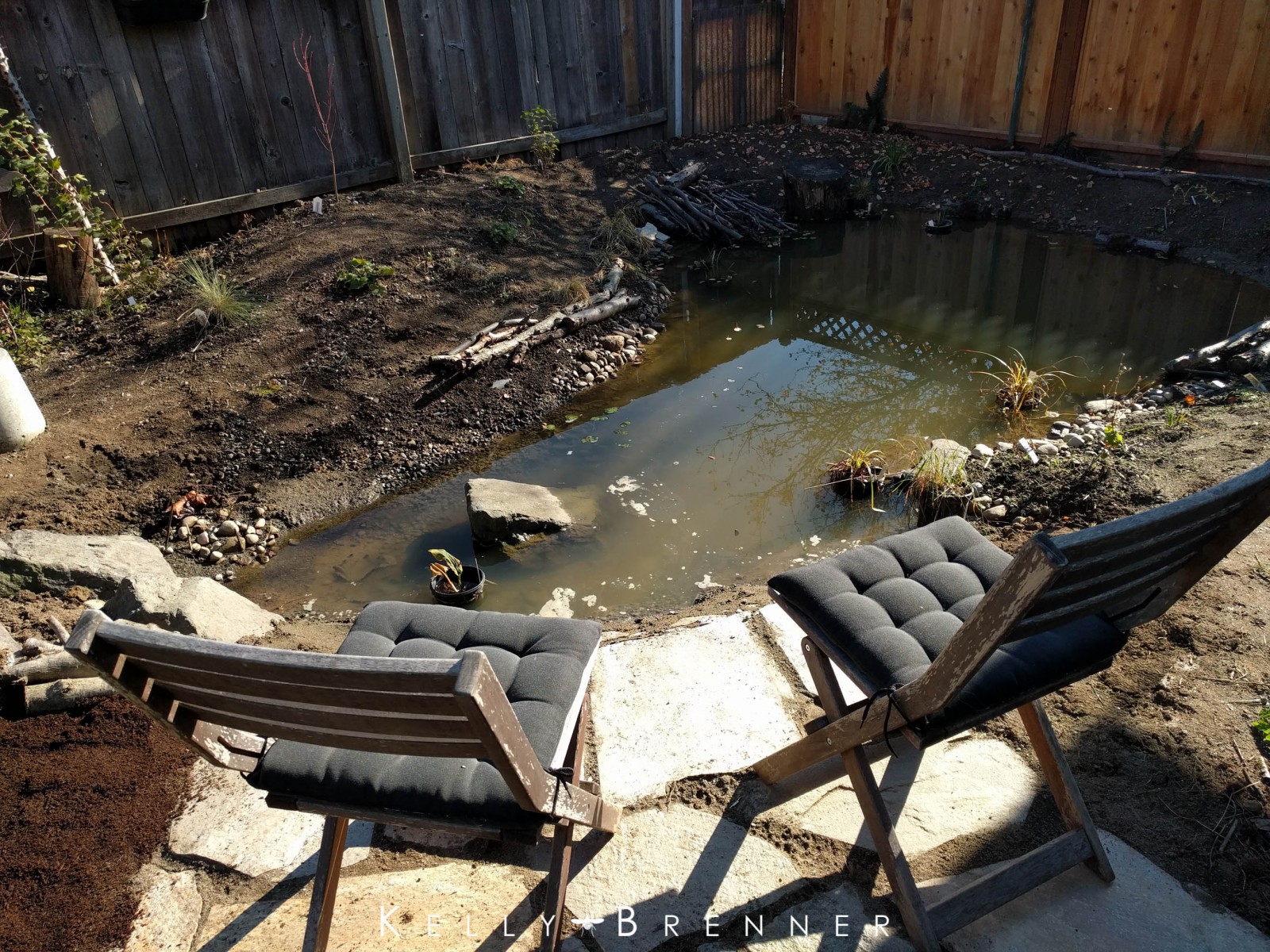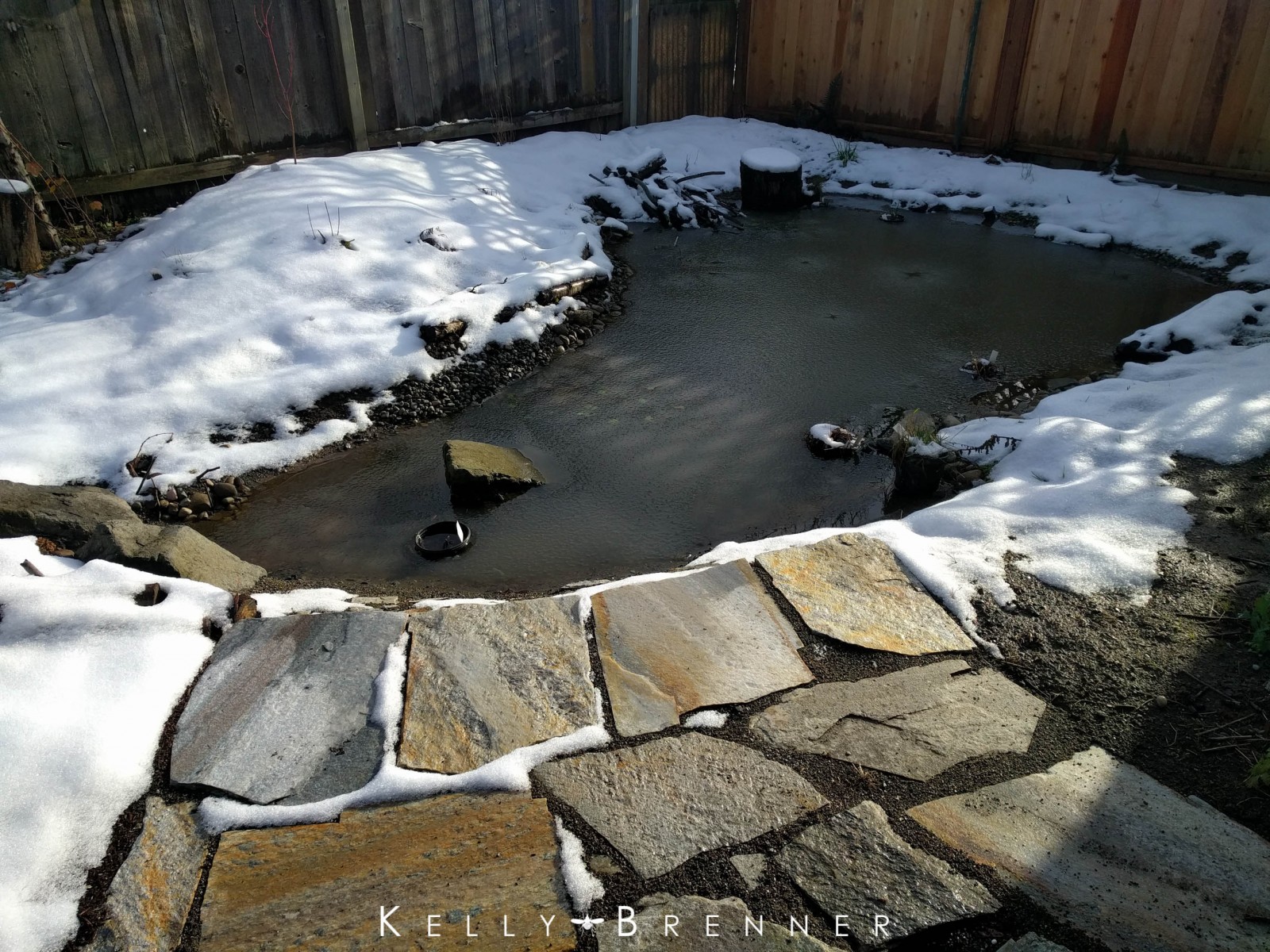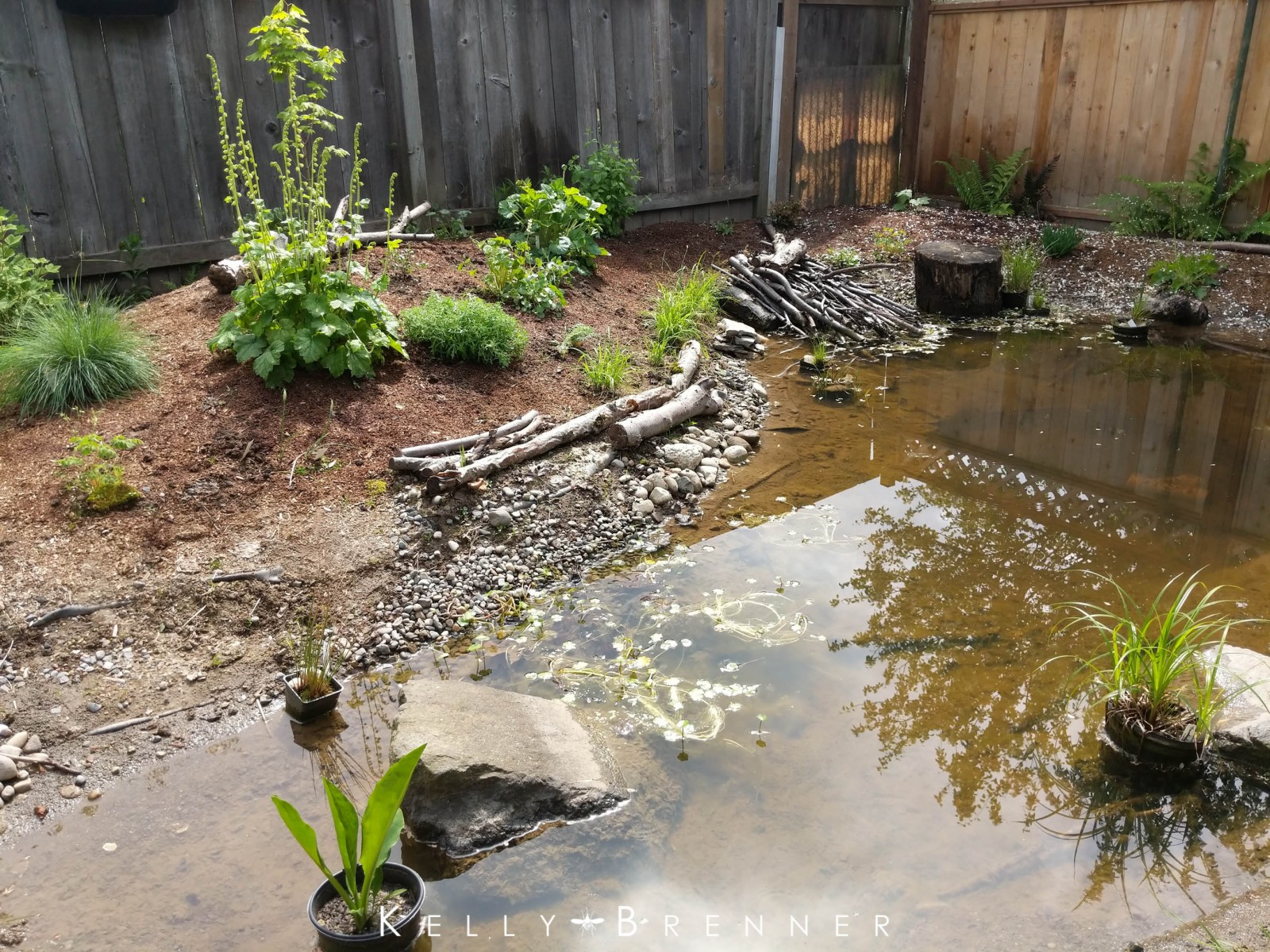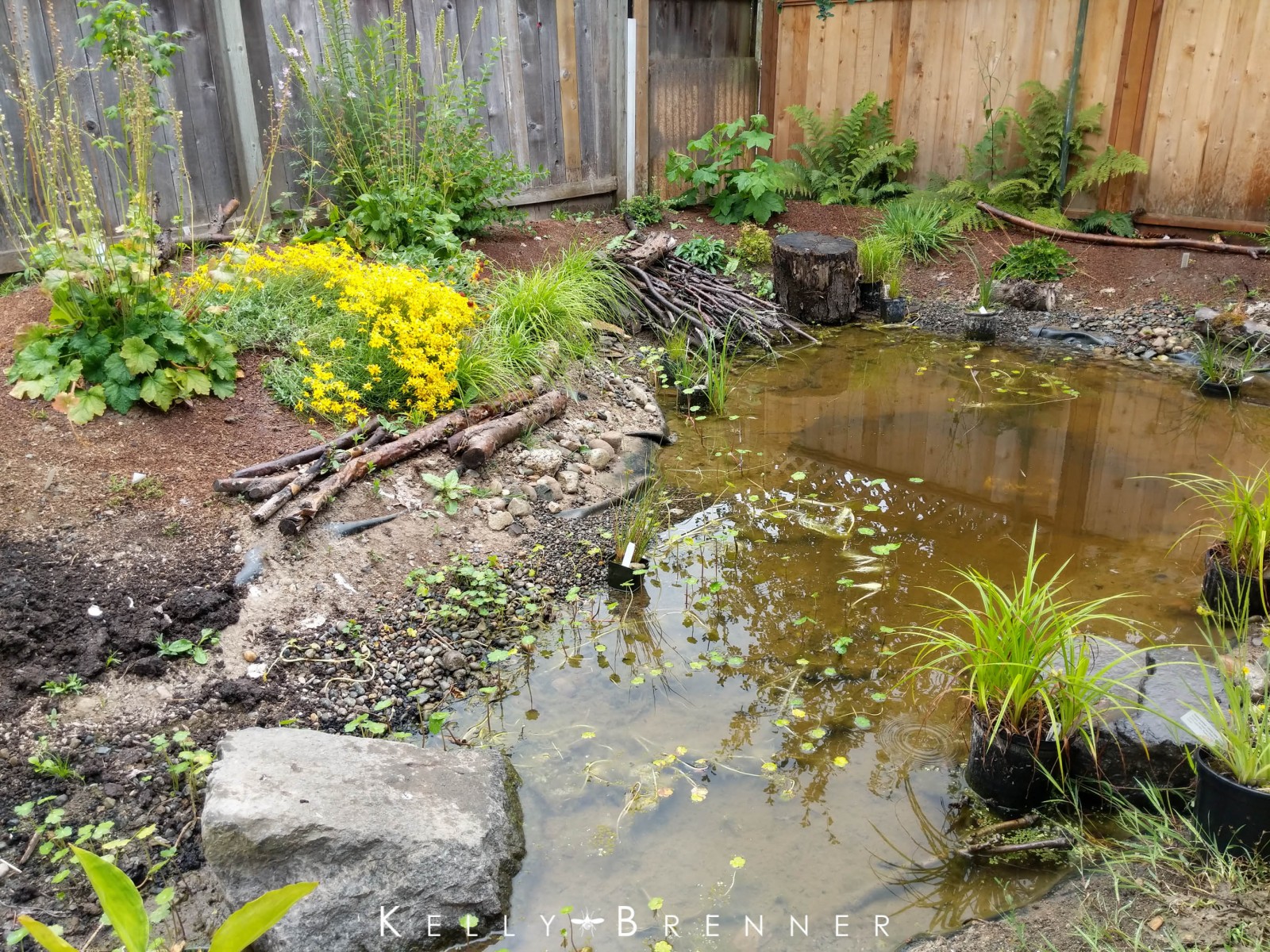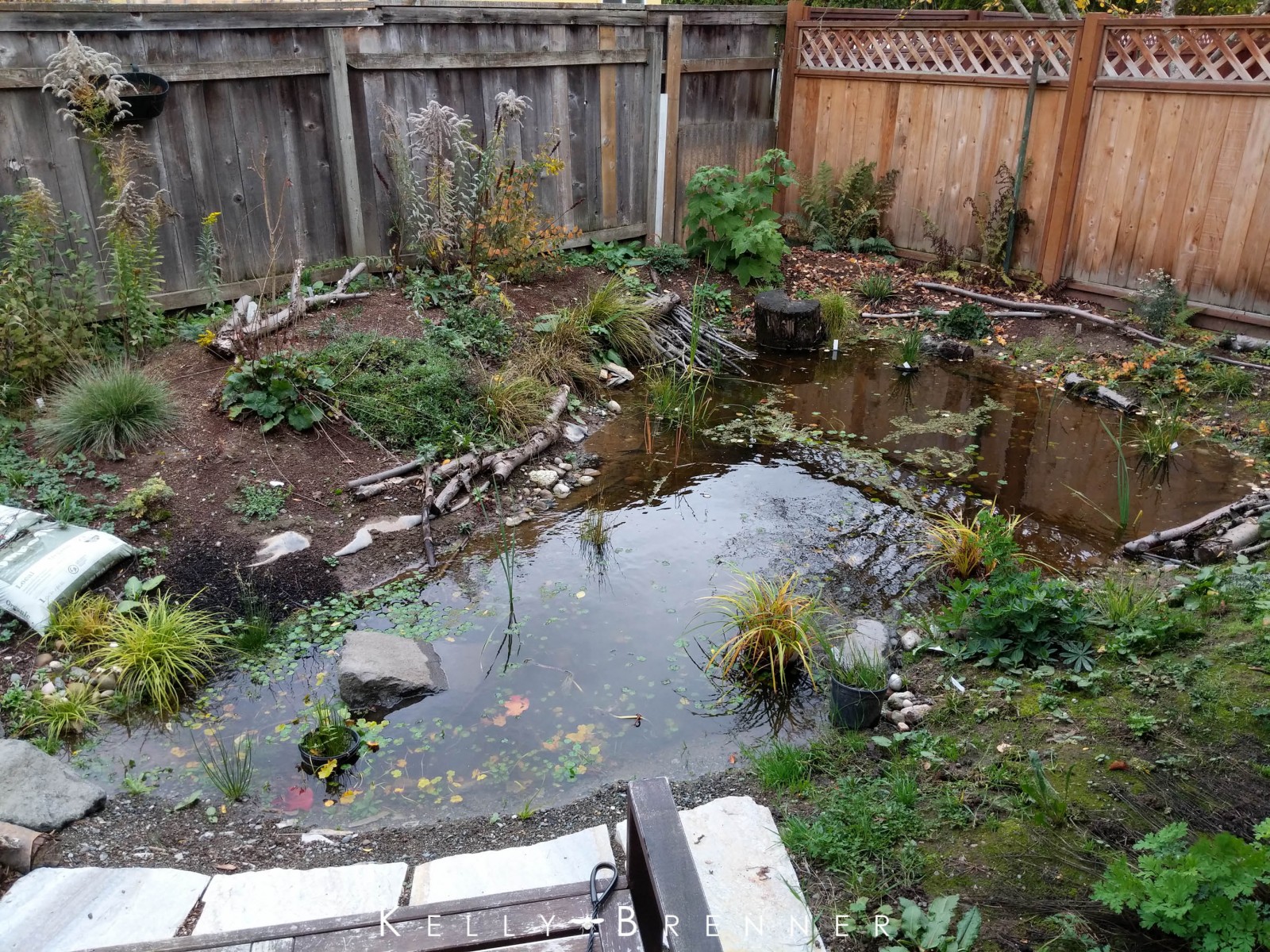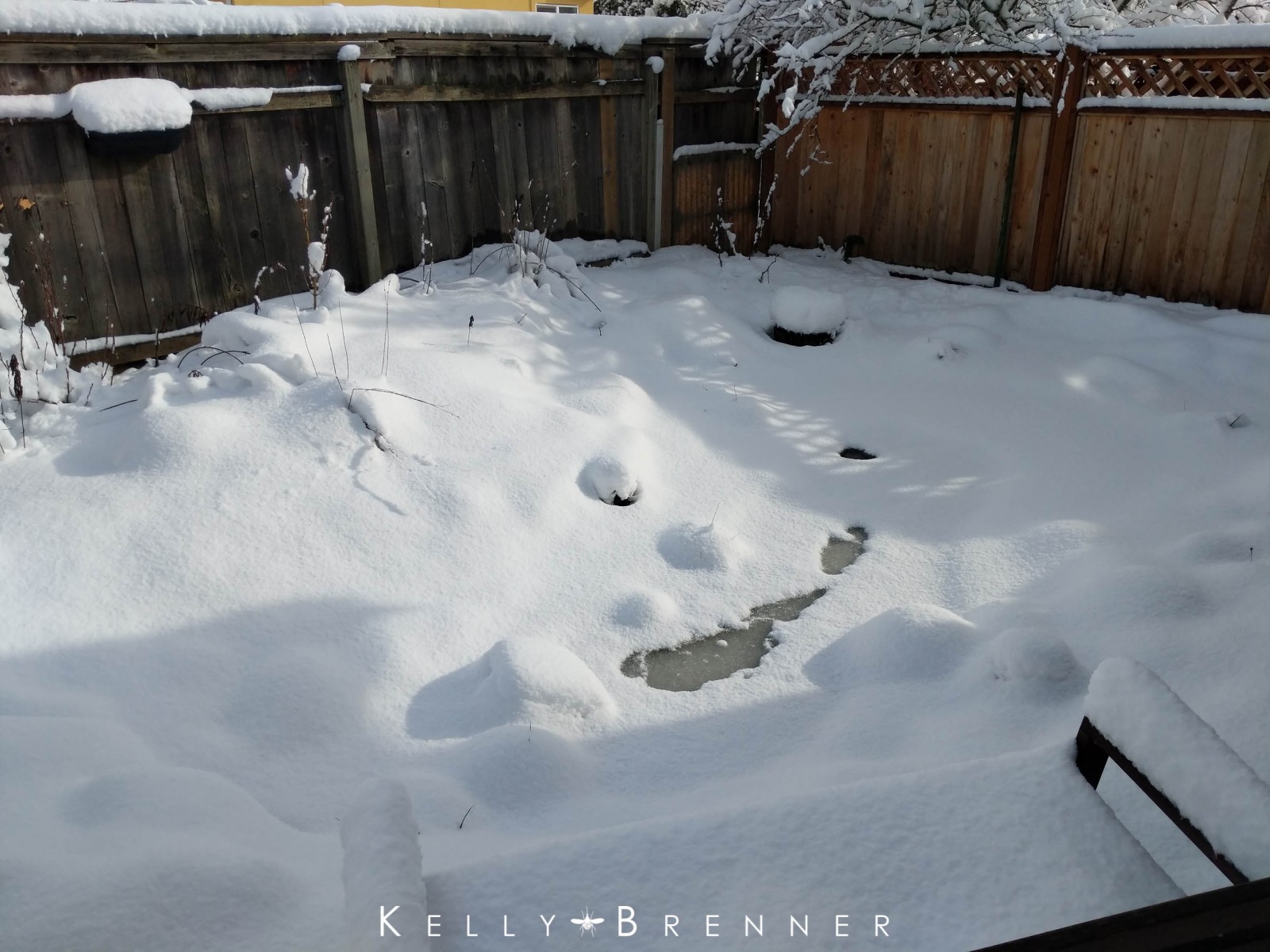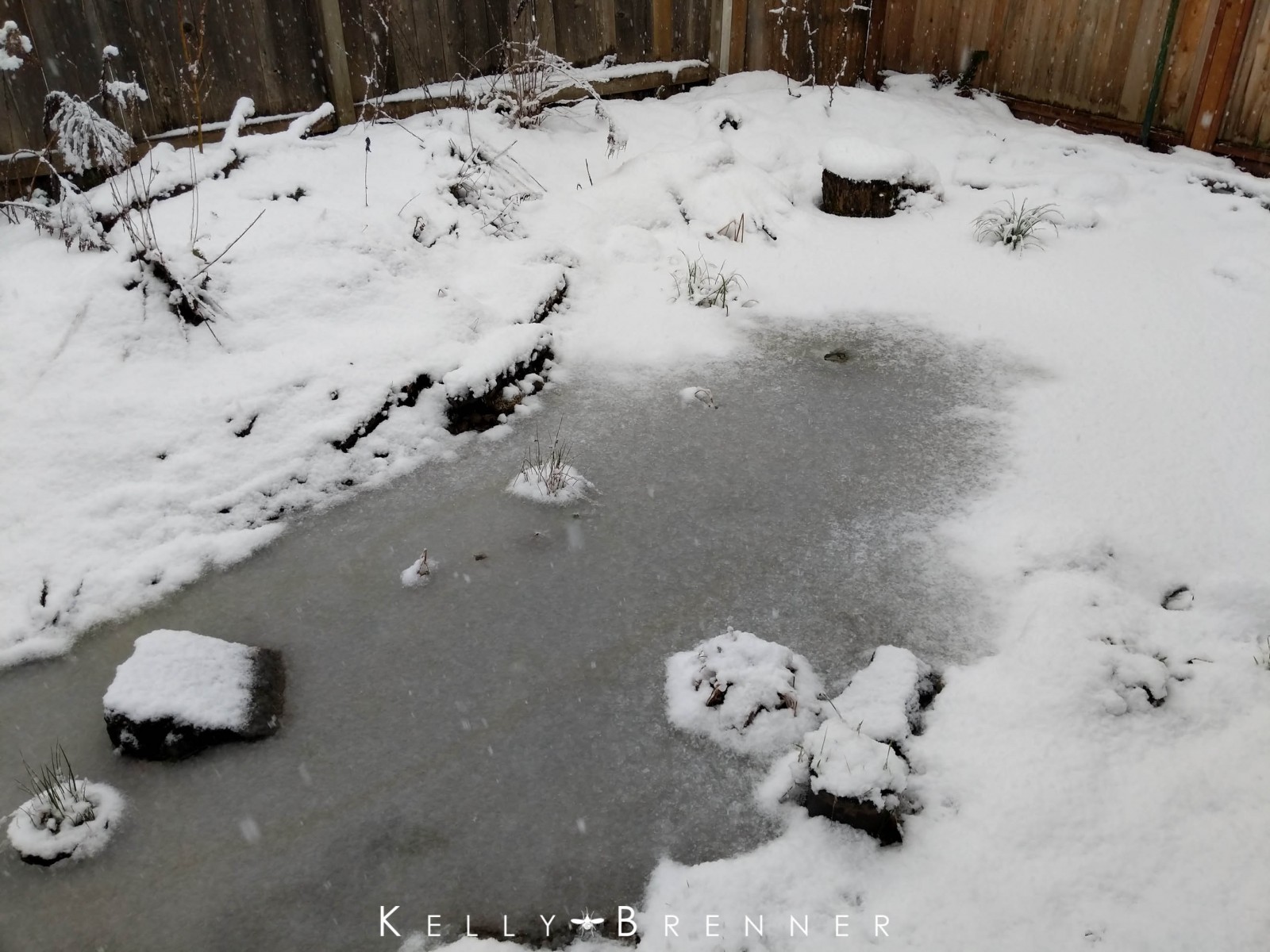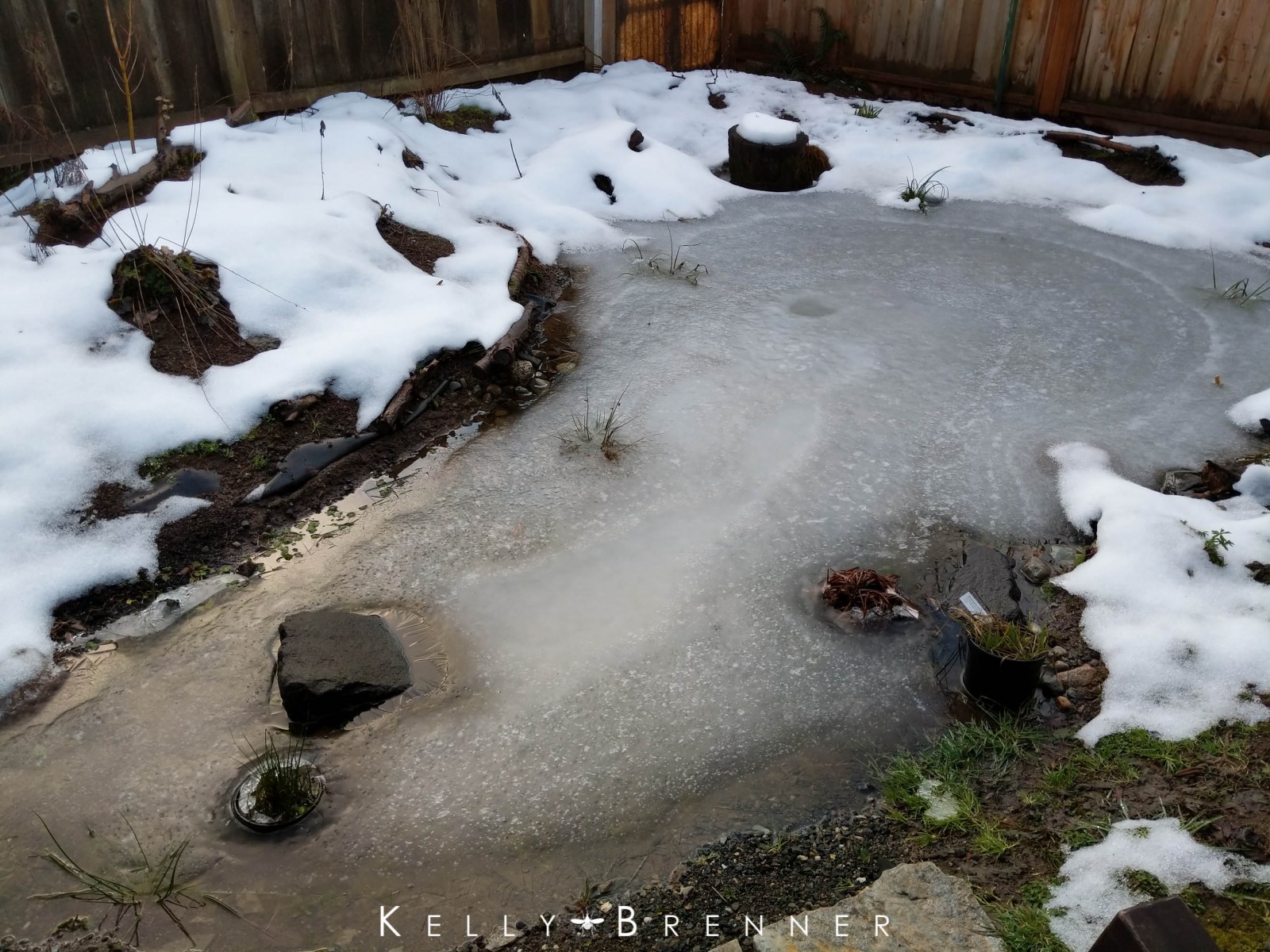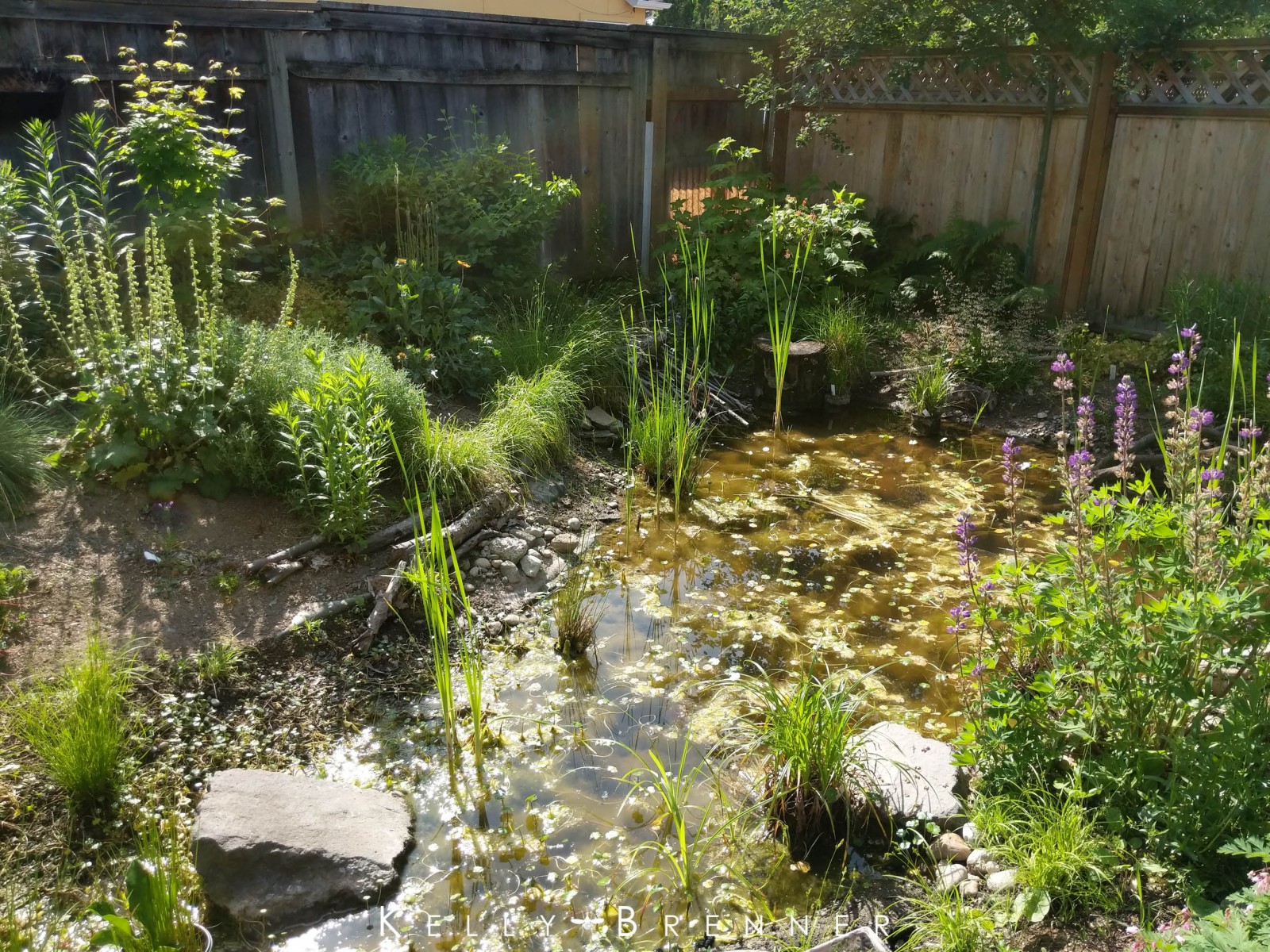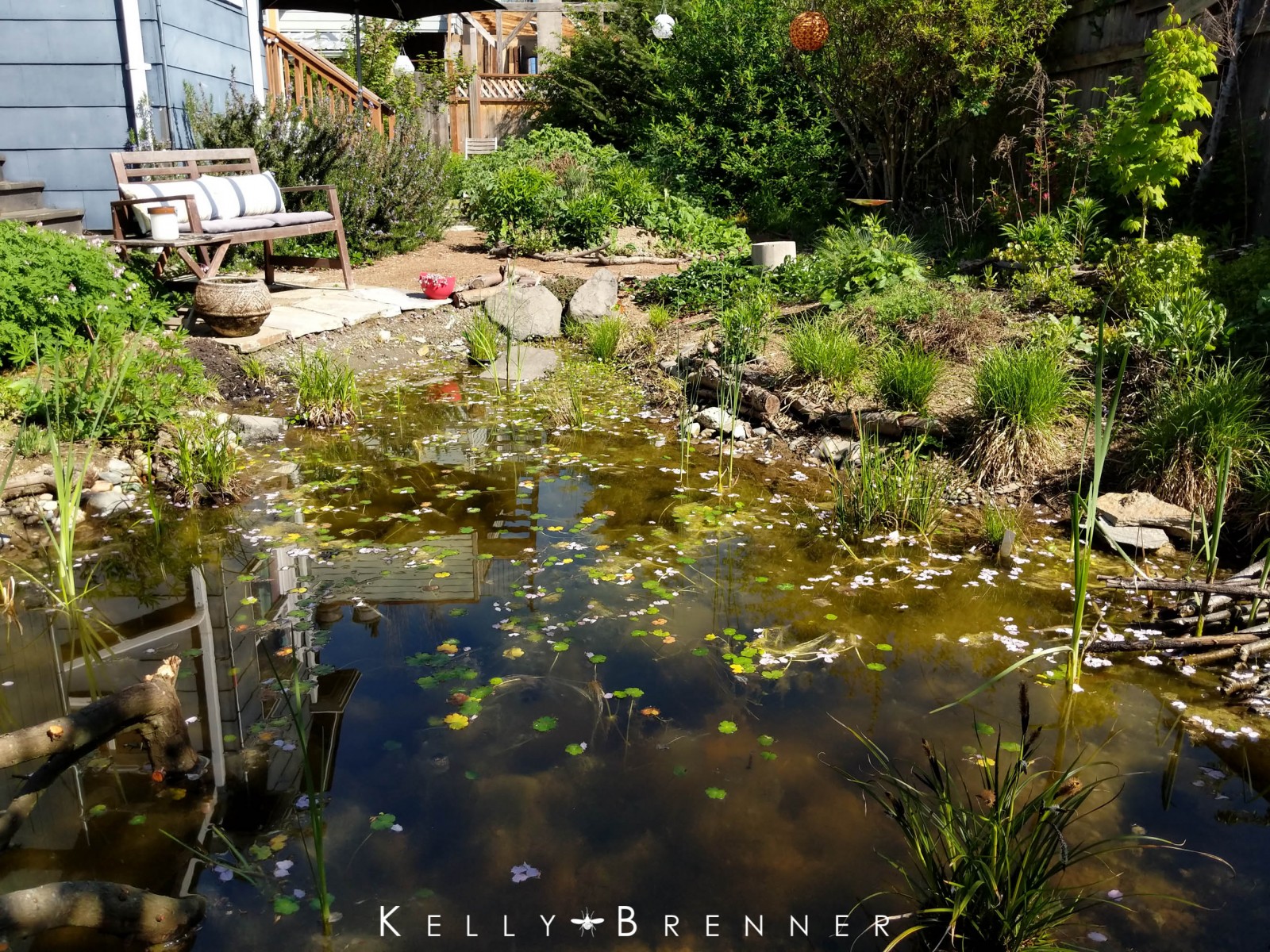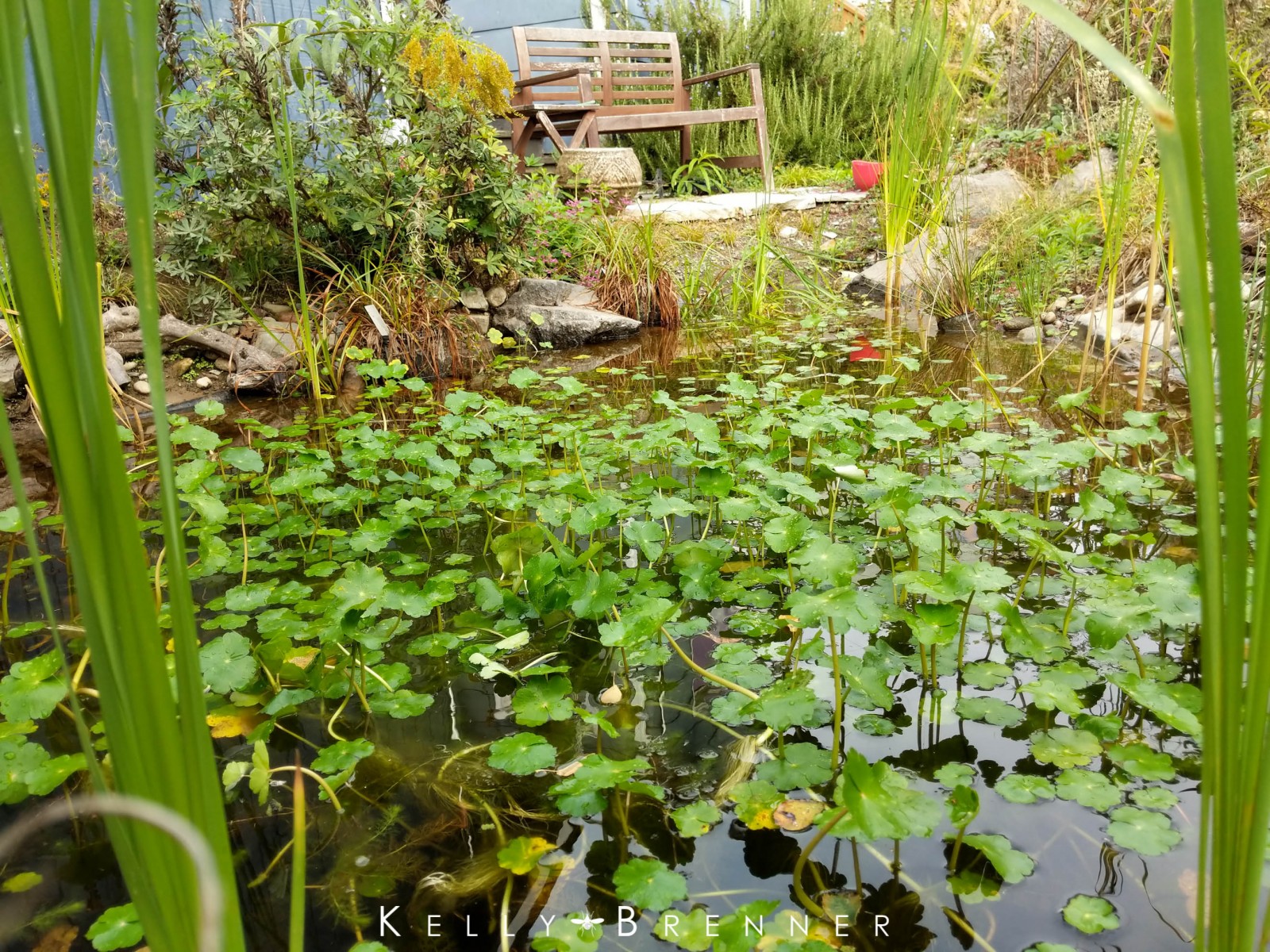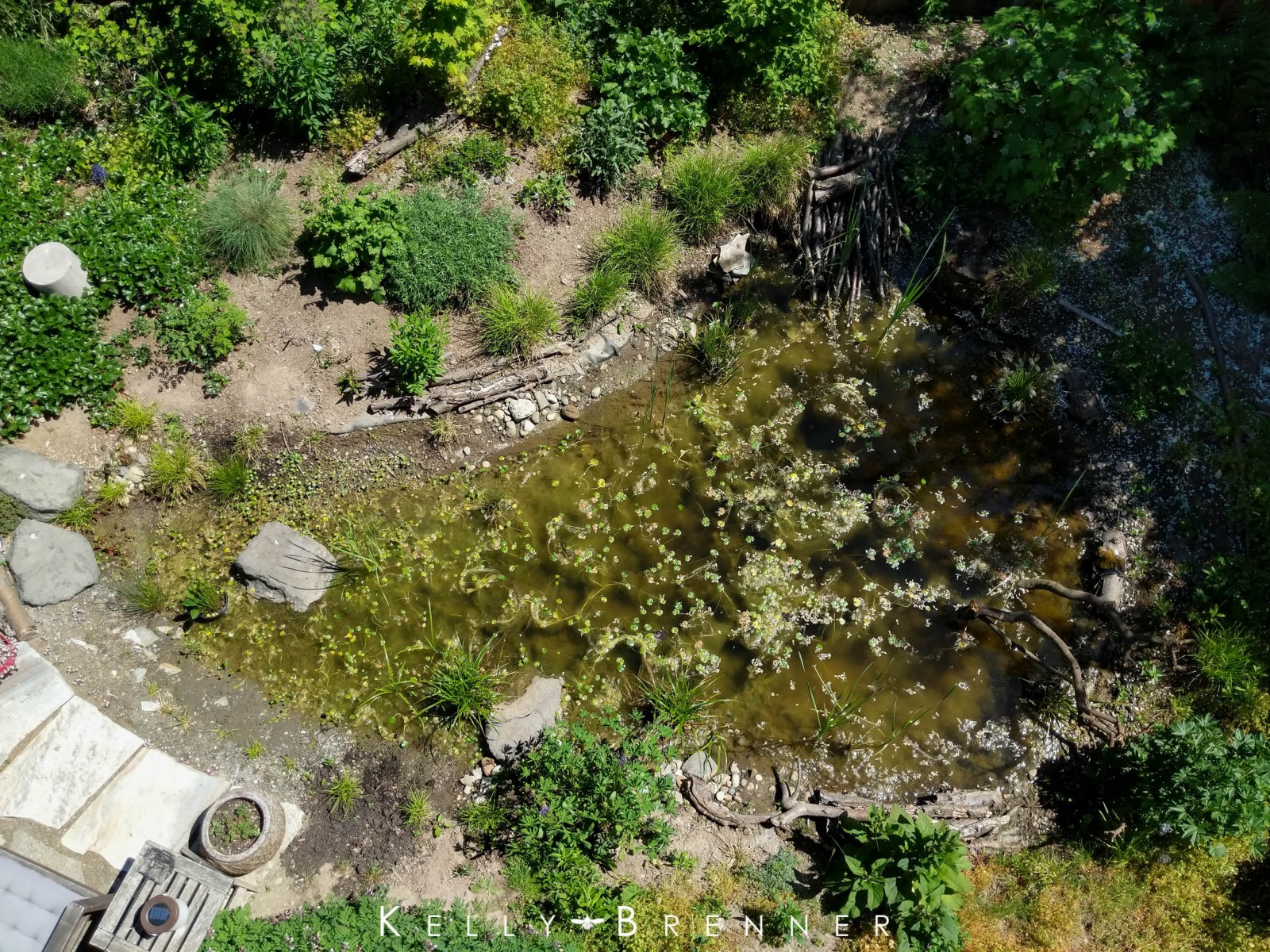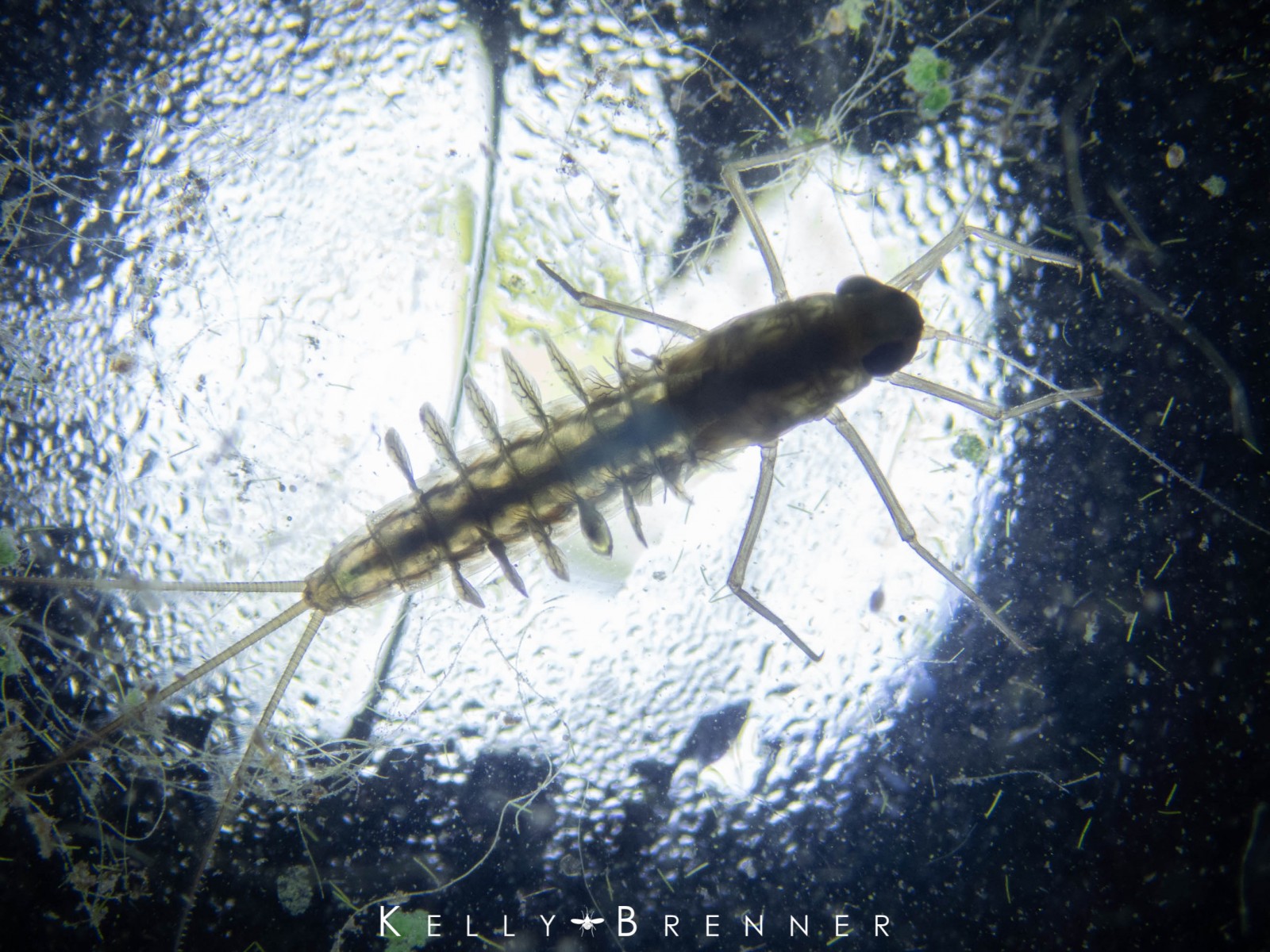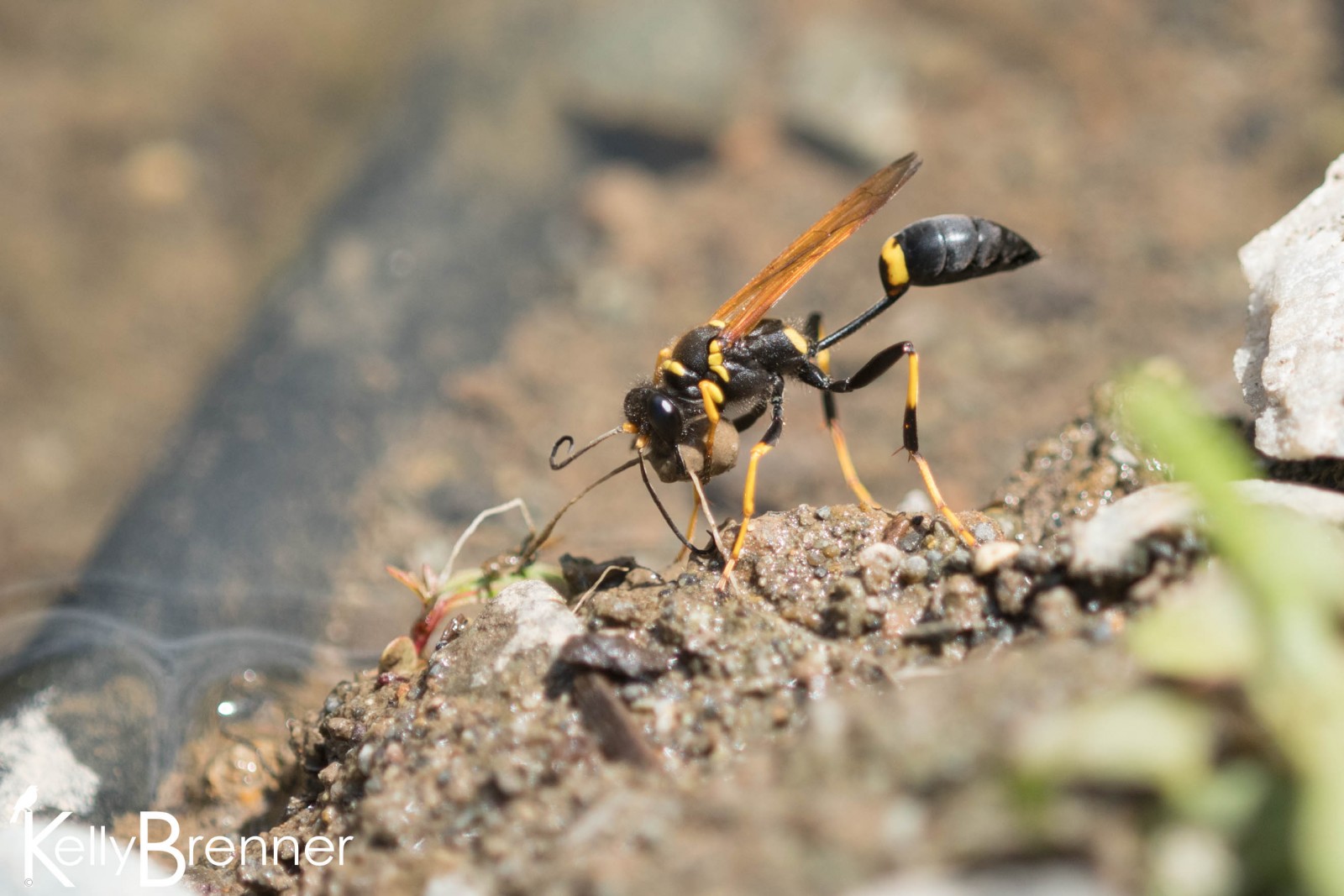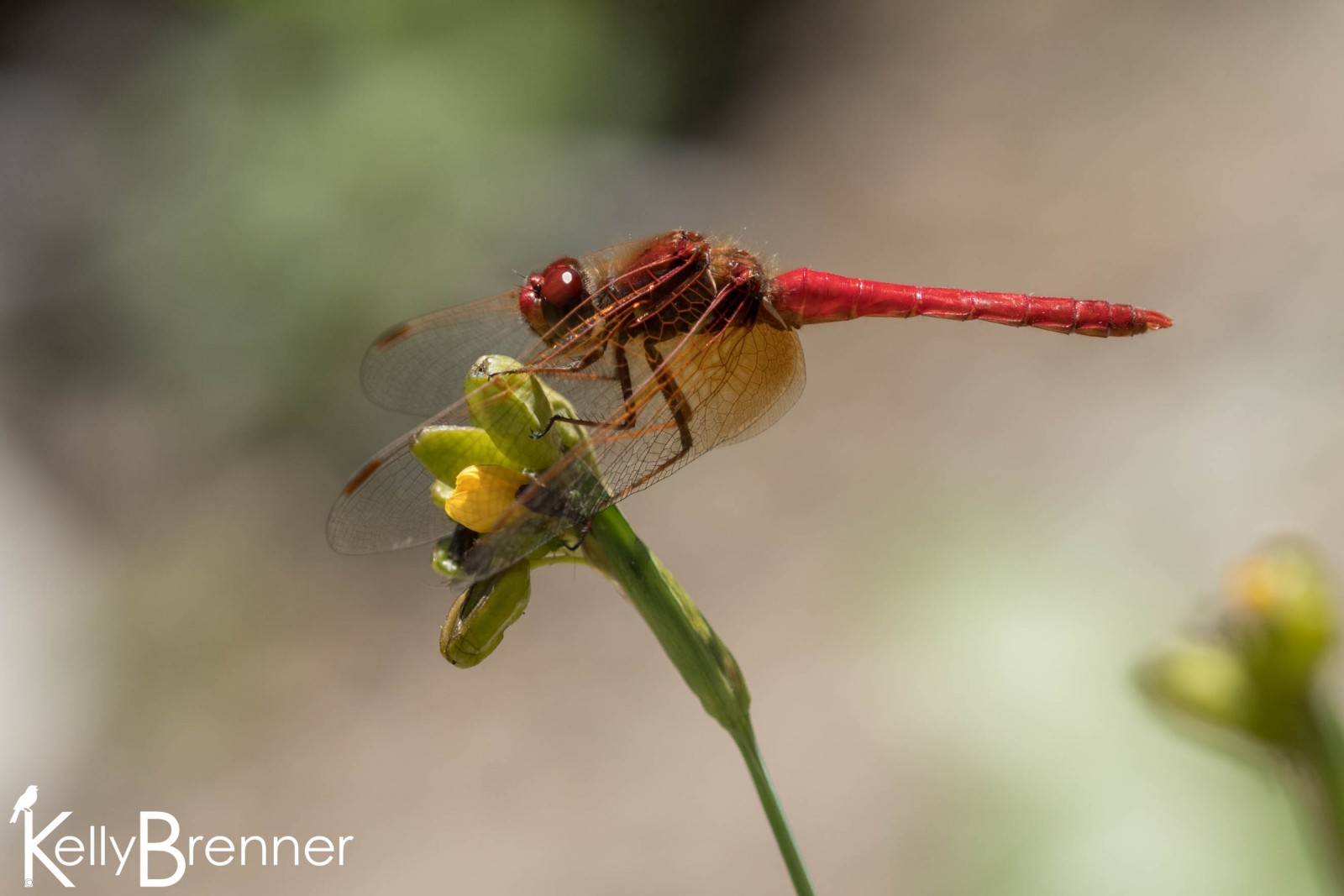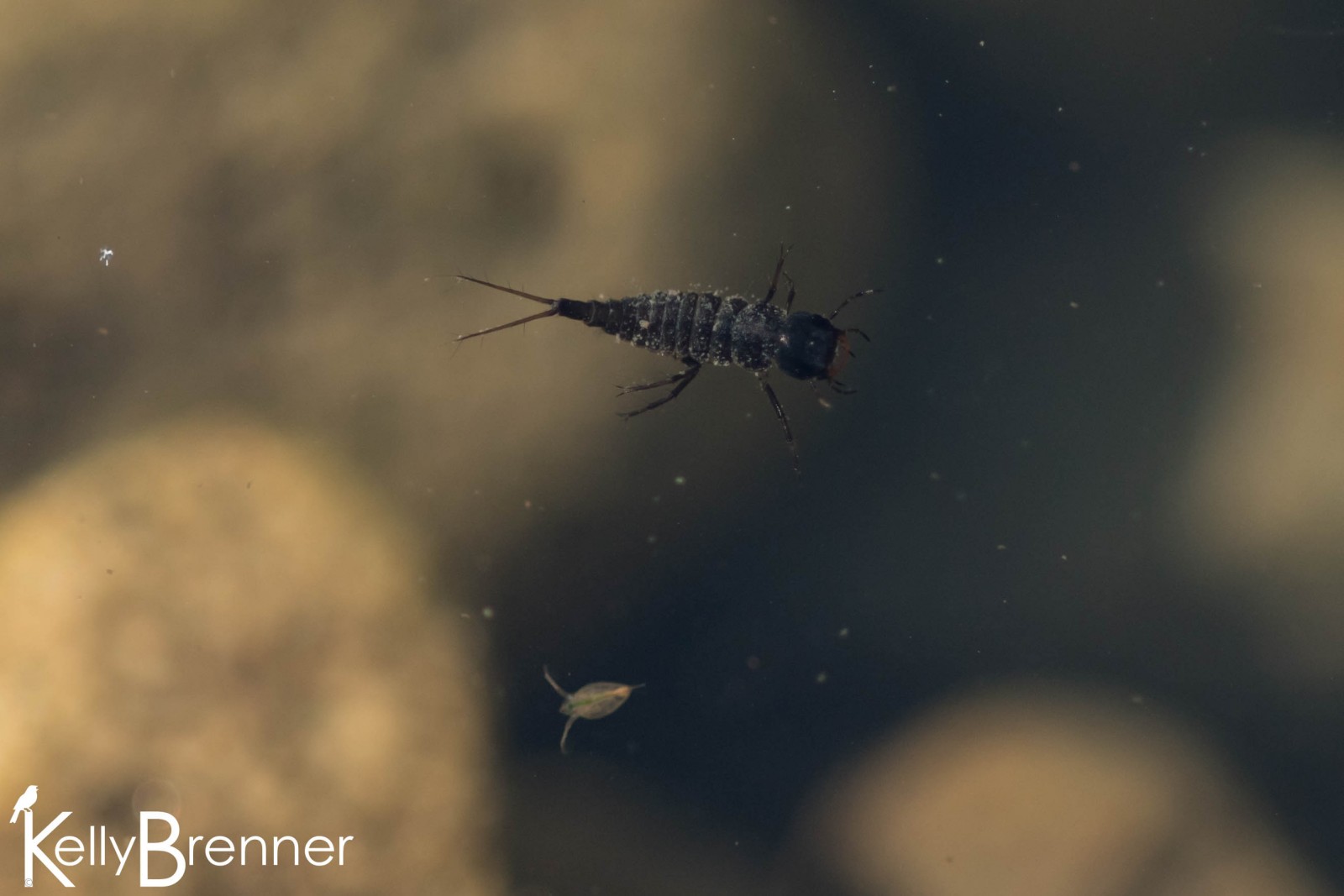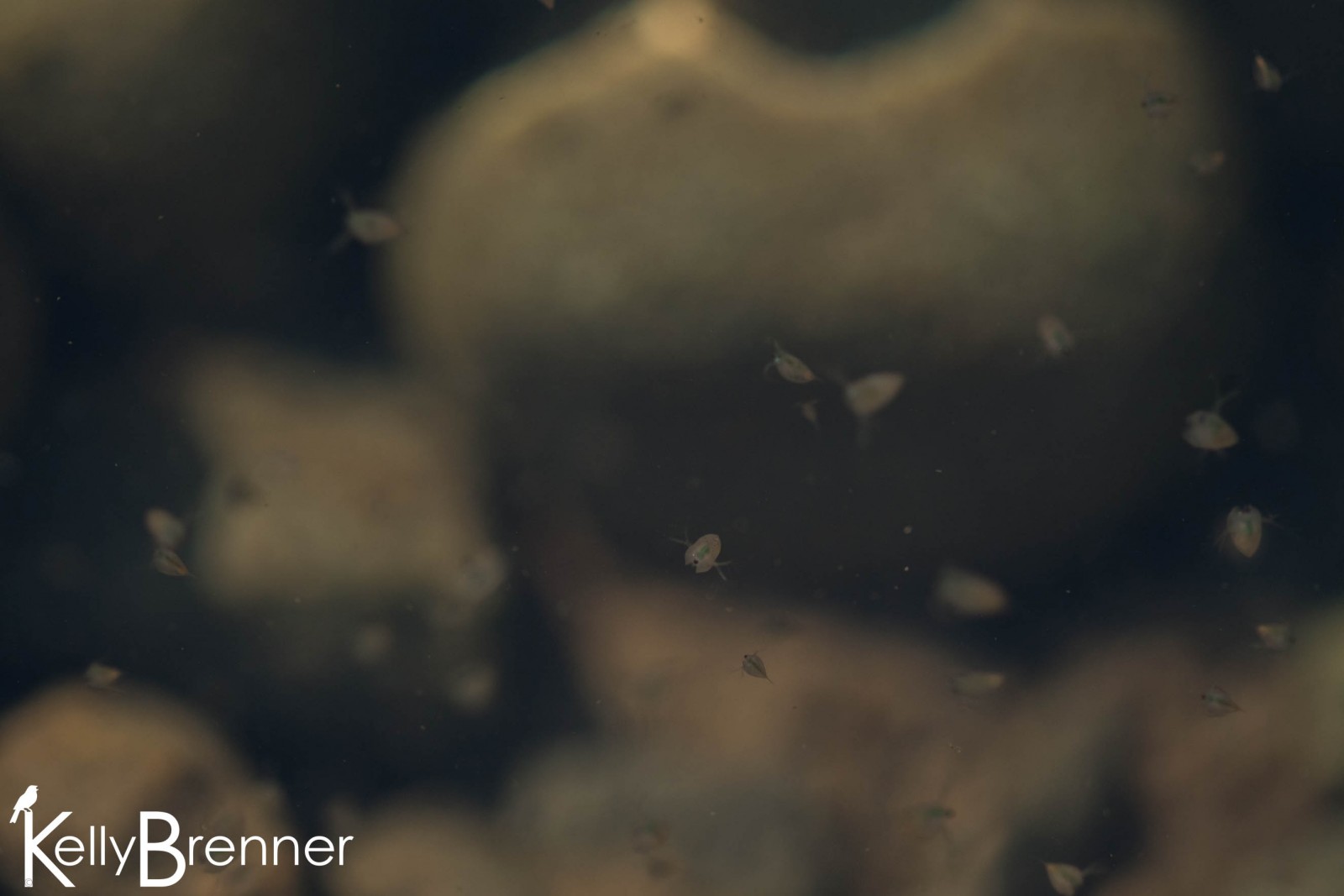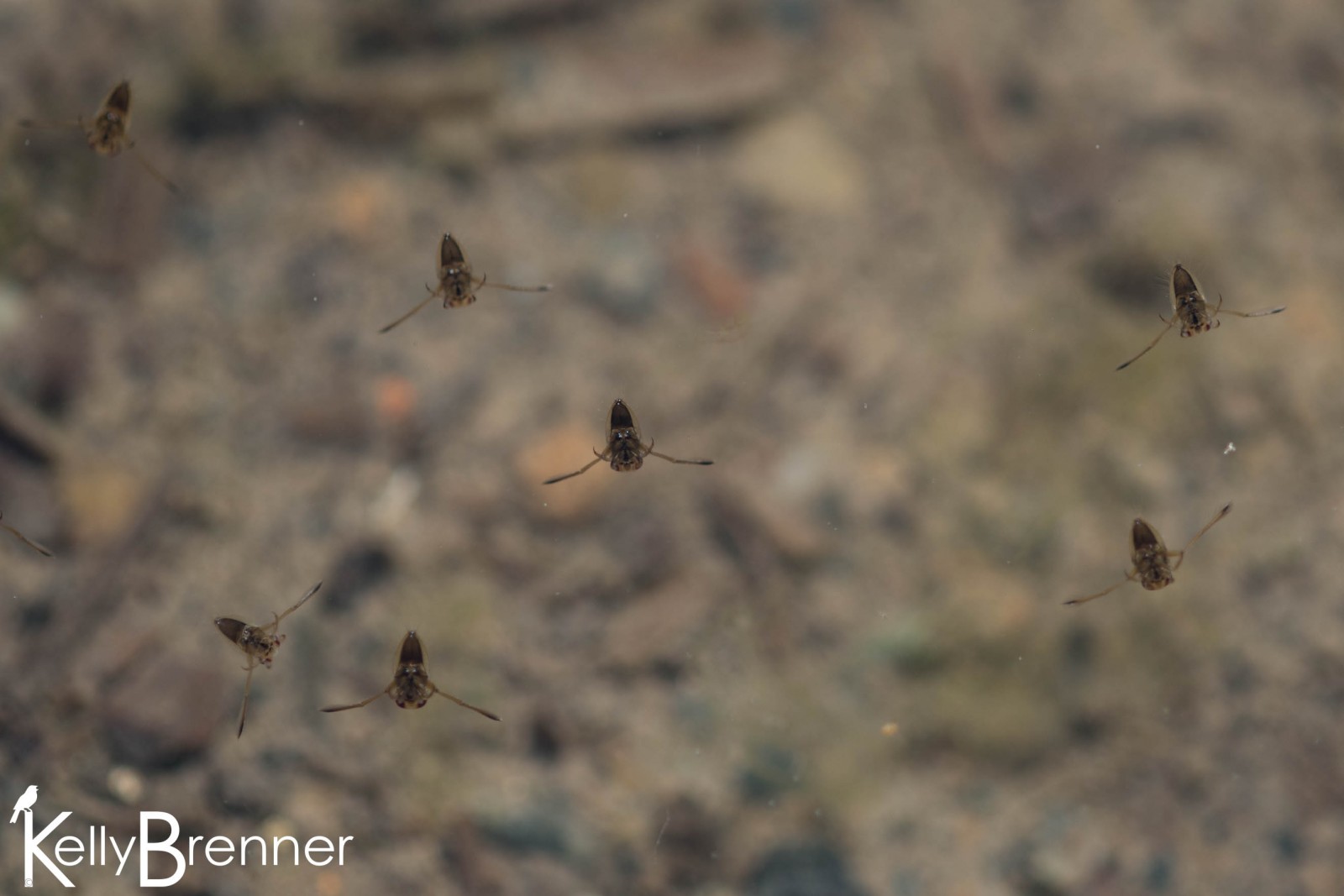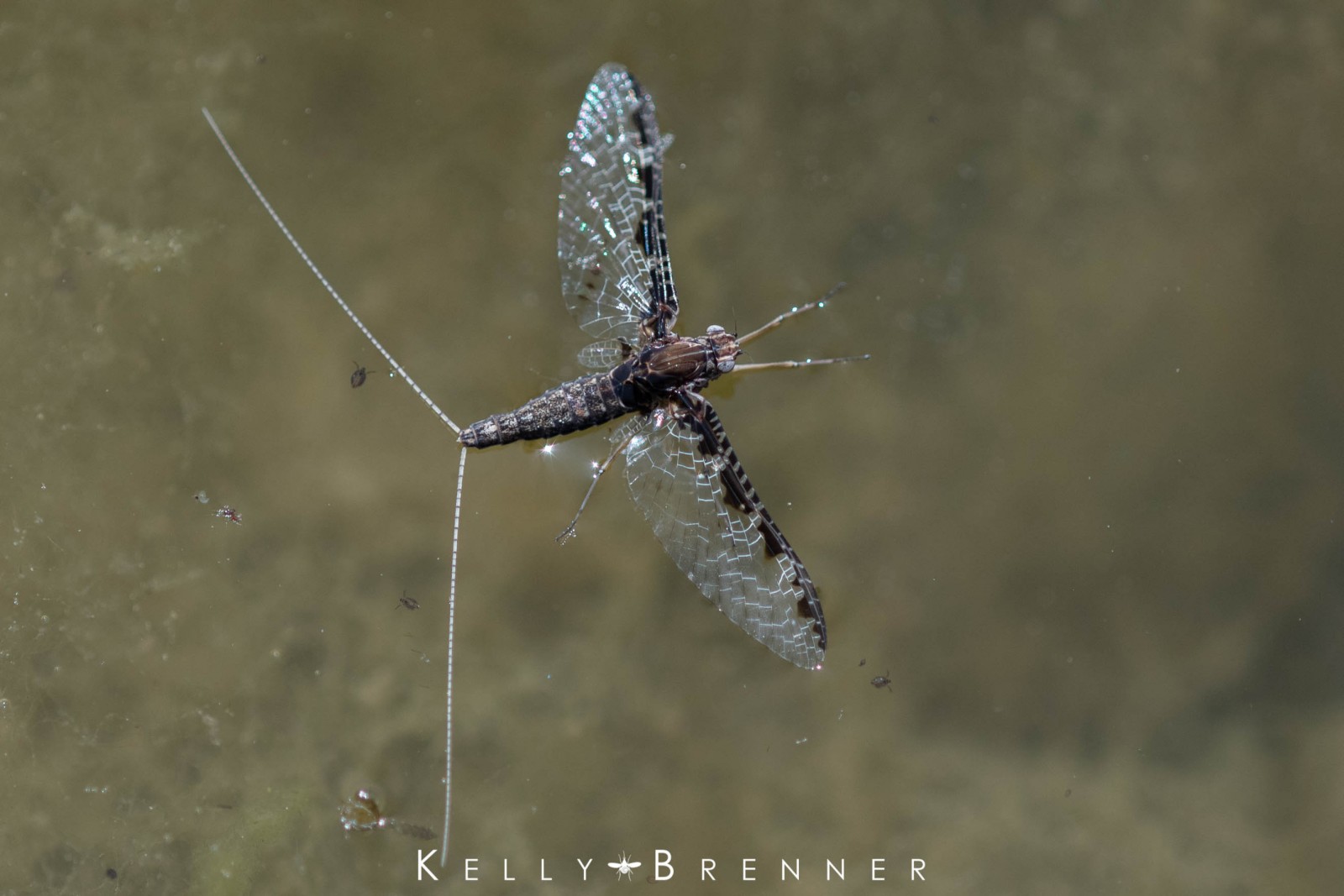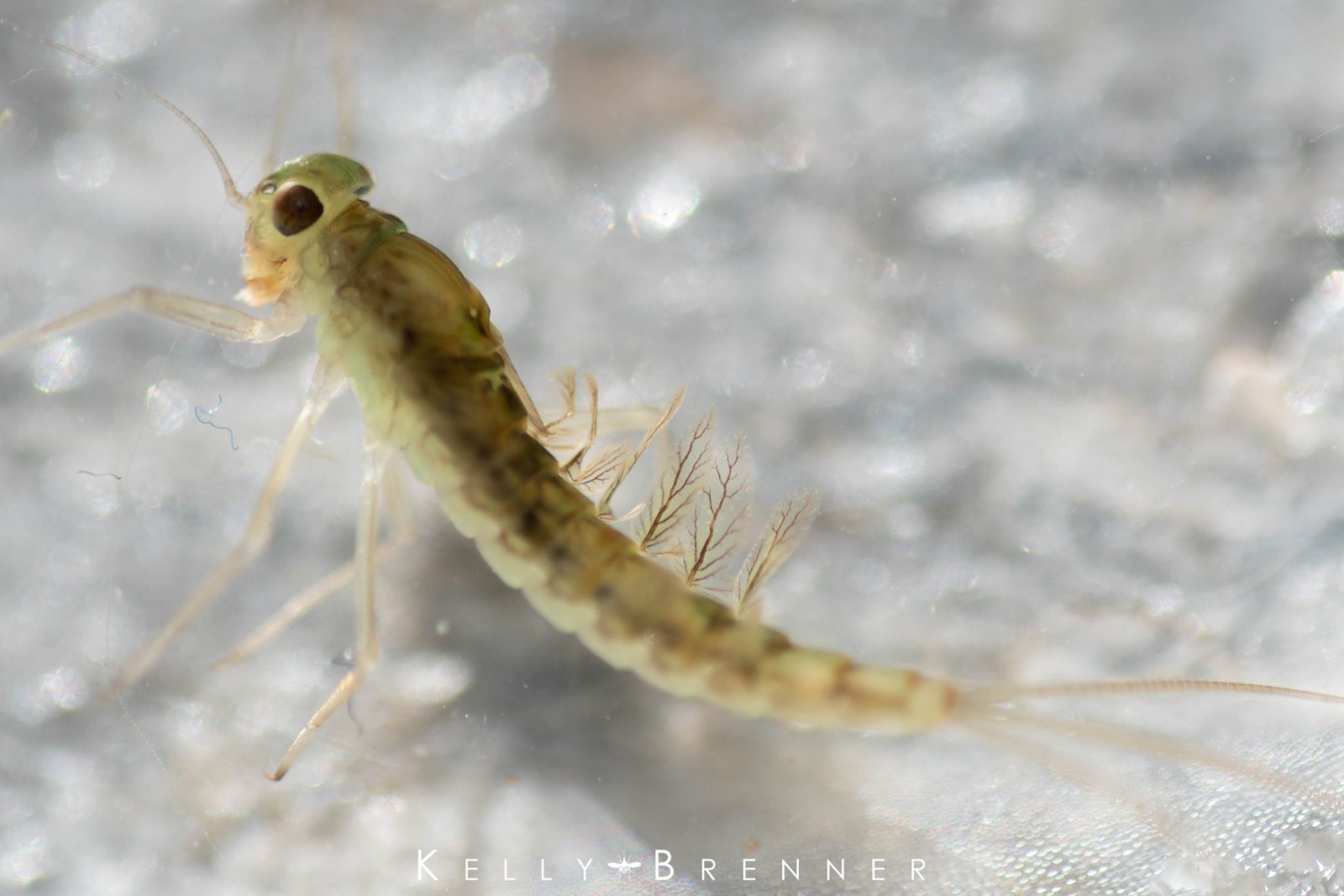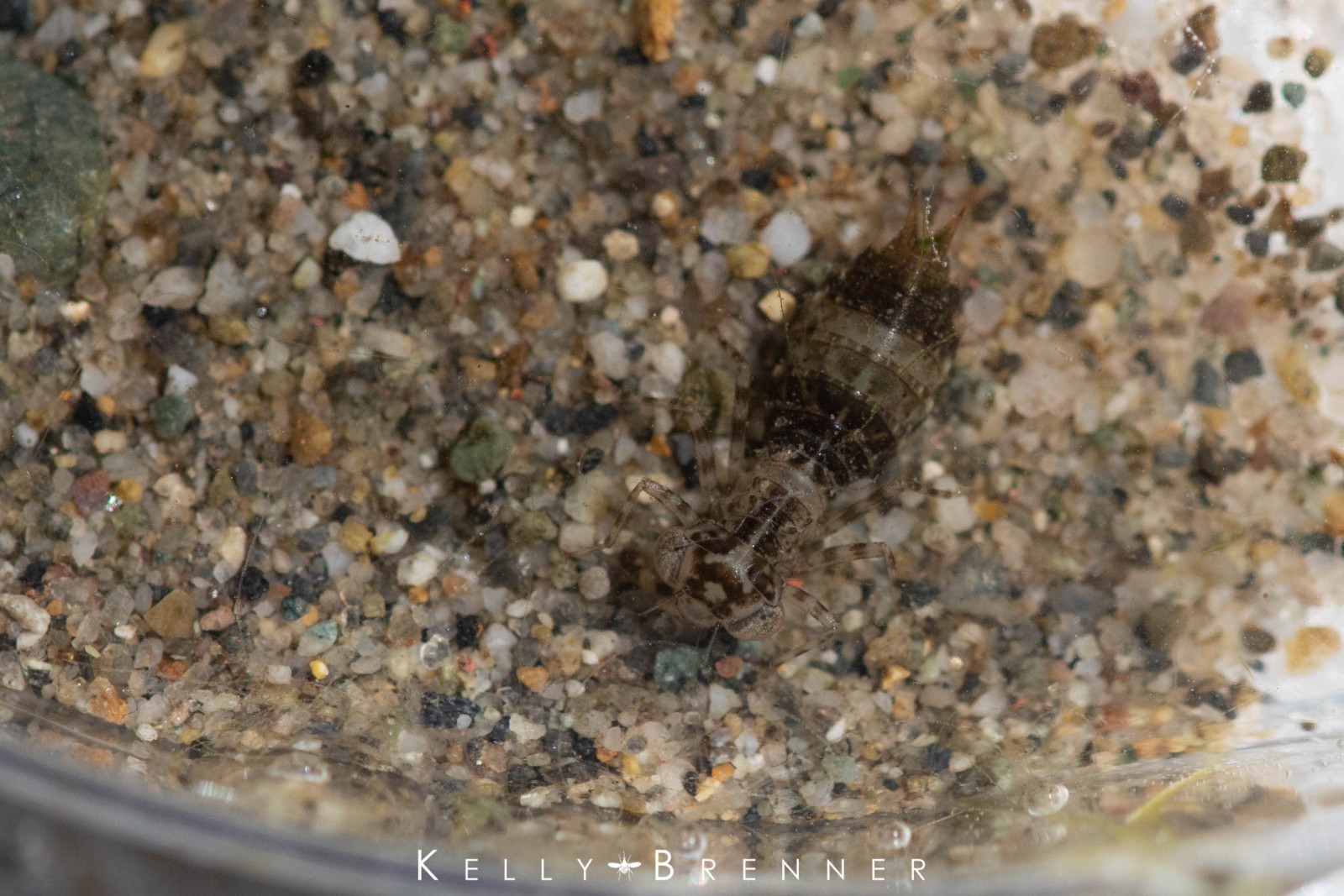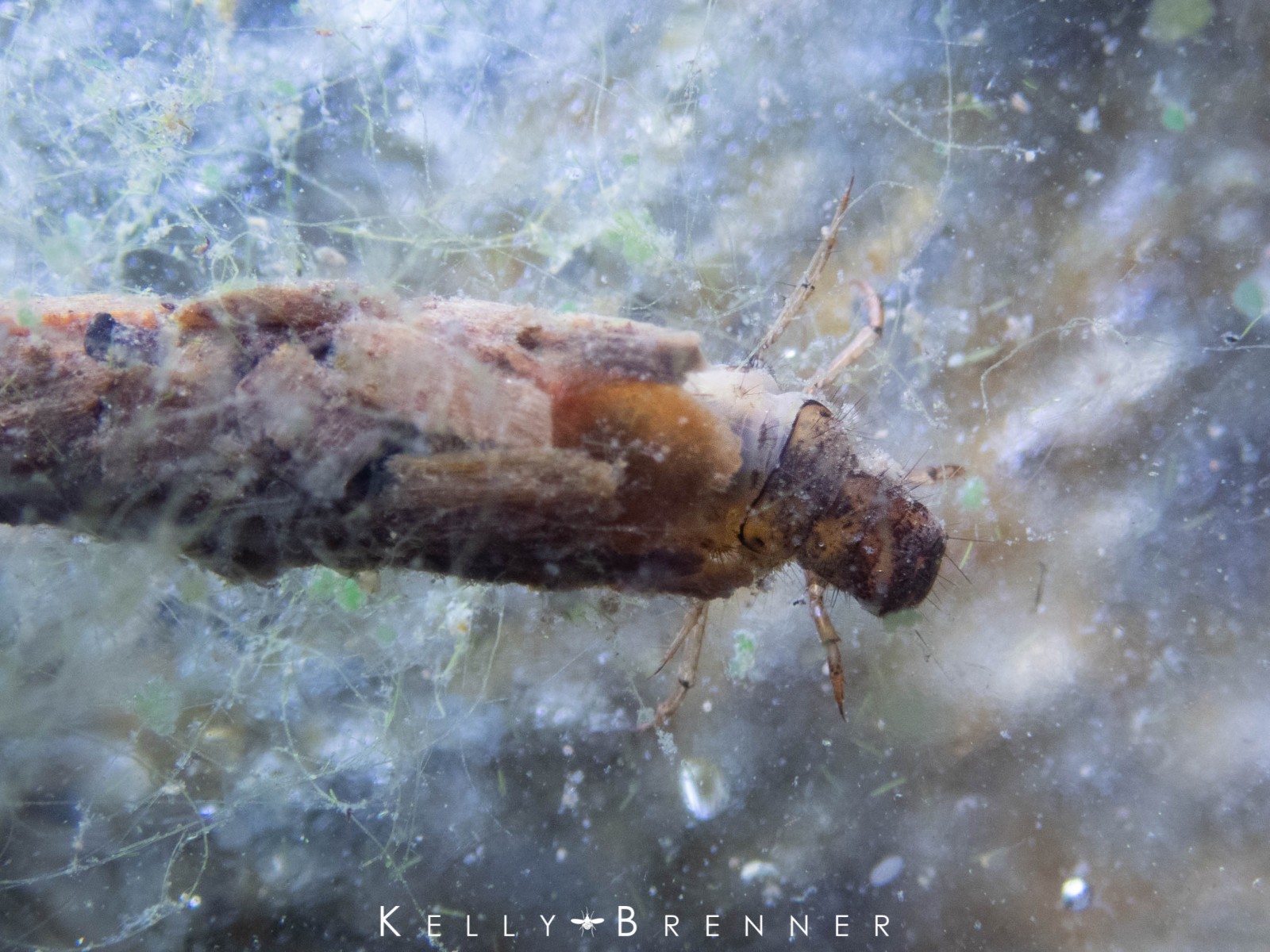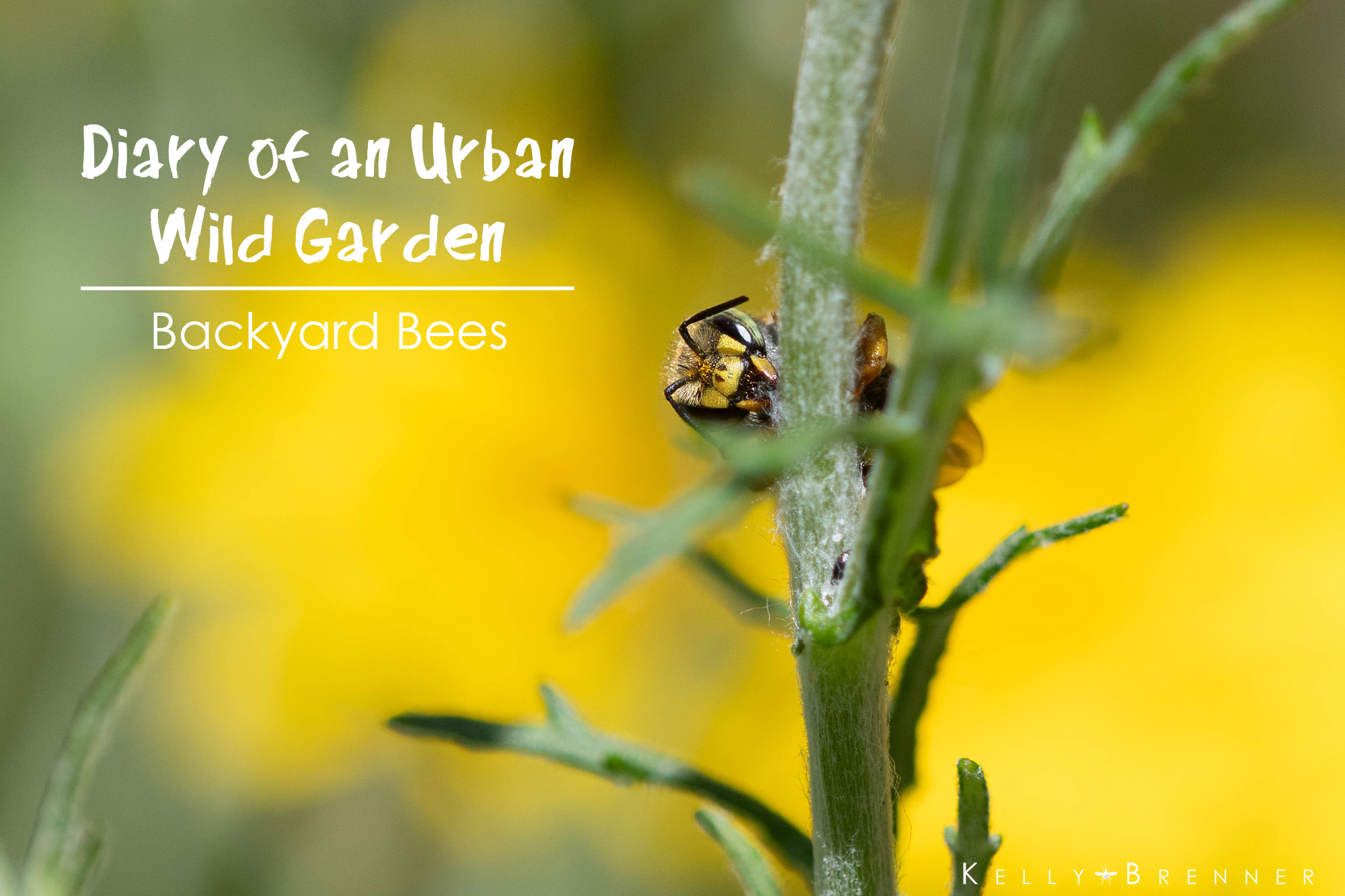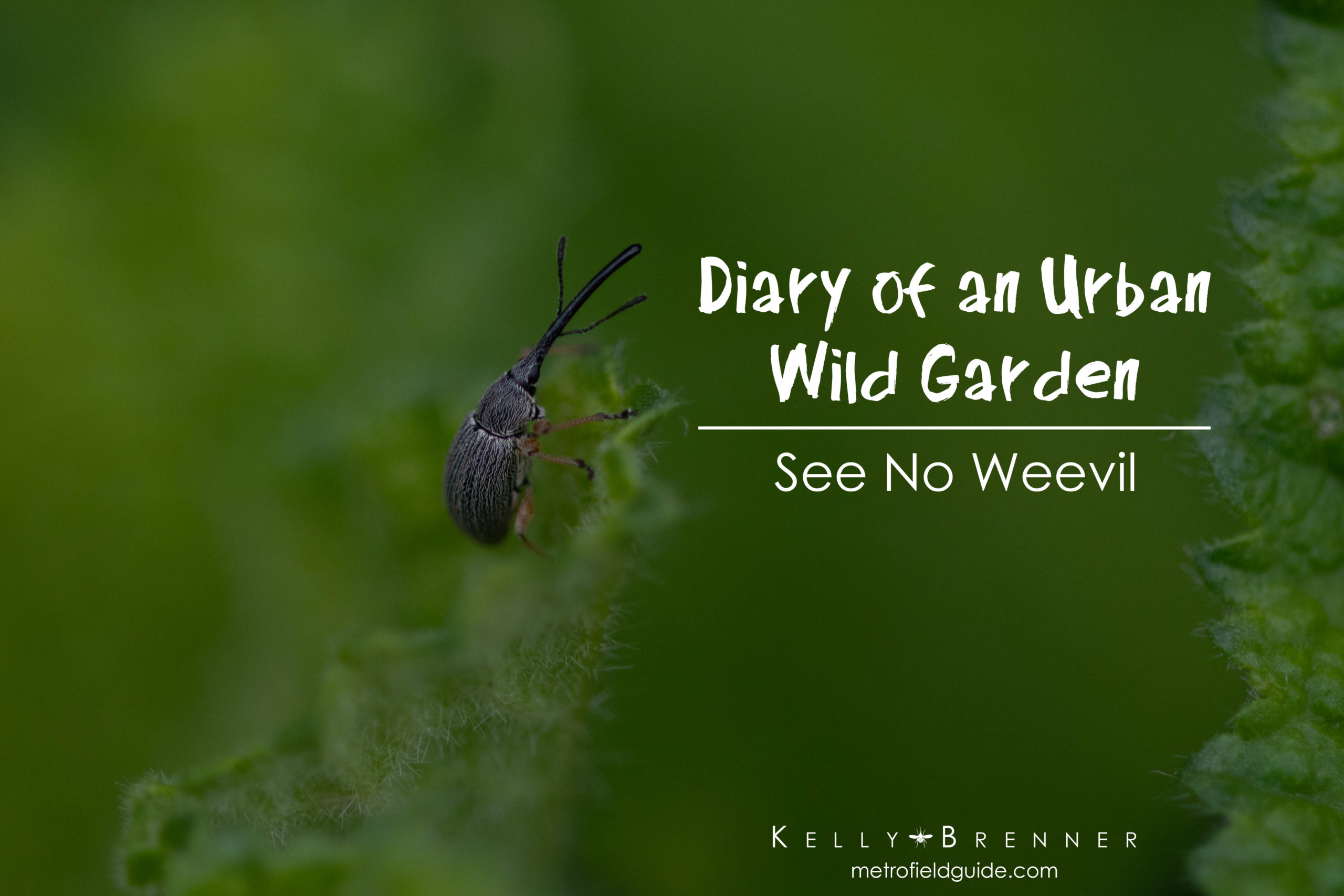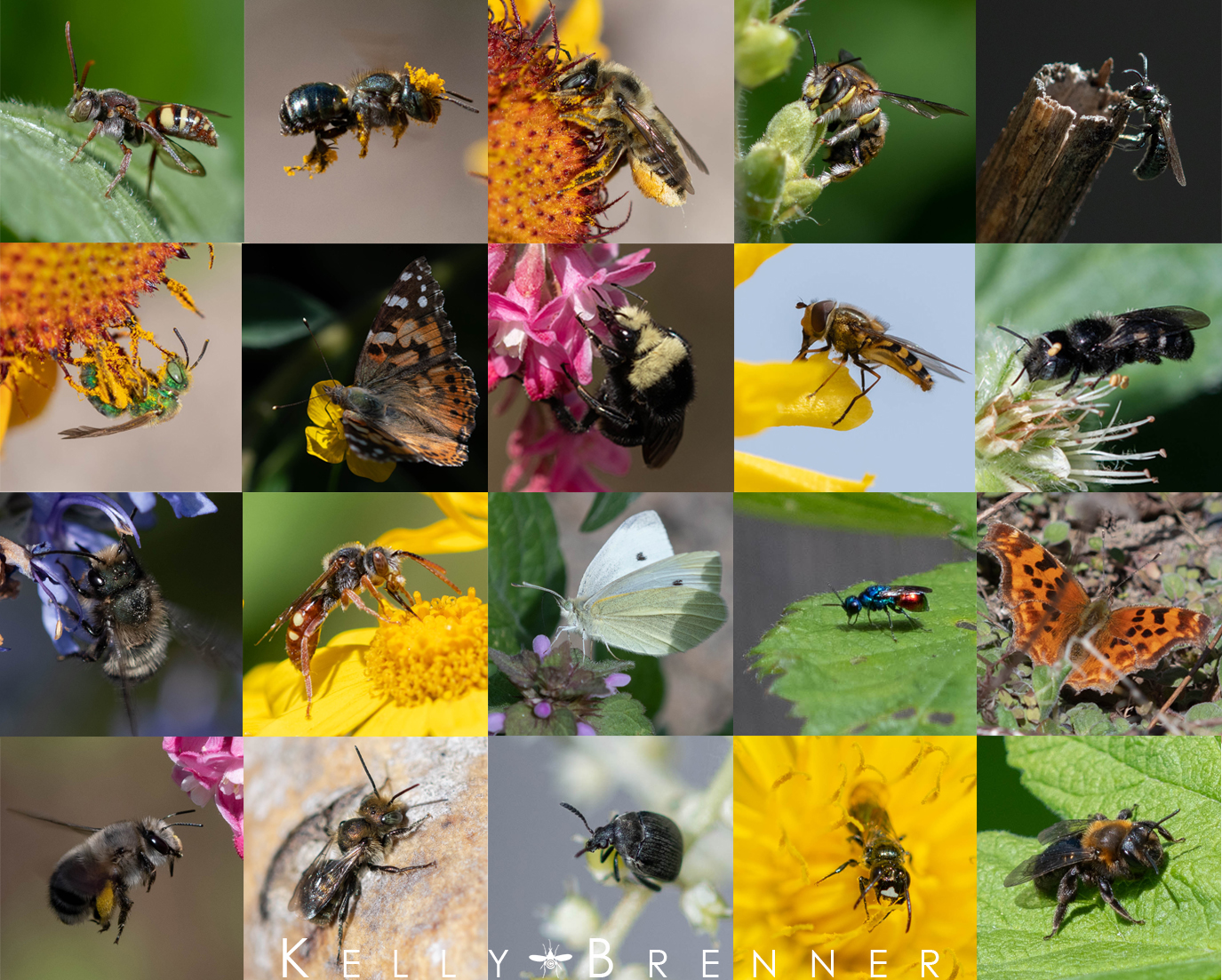The birds and the bees are great, but what I’ve wanted since I started transforming a featureless backyard into wildlife habitat, was a pond. I have long been fascinated by dragonflies (they will feature in a chapter in my upcoming book Nature Obscura: A City’s Hidden Natural World), and I wanted to bring them to my own backyard so I could watch them. Over the years, dragons had visited the yard, usually females who would rest on the fence or on a branch for a time, or darners and saddlebags cruising over the neighborhood, but I wanted to offer habitat for the full life cycle of the dragon.
When we moved in, the backyard was 2/3 lawn with a lone forsythia, and 1/3 deck. The deck was a huge wasted space and a hideout for rats so about three years ago we began slowly dismantling it and then began the backbreaking work of digging out the pond and installing it. Once the pond was finished, it was immediately populated with various aquatic invertebrates and over the two years since, I’ve intently watched and monitored the pond and it only gets better each year.
Planning & Construction
The single biggest concept to successful wildlife habitat, including a pond, is diversity. A pond designed for wildlife will have varying depths, different substrates, a diversity of plants and various types of edges.
Because my goal was to create a pond for dragonflies and other aquatic invertebrates, I opted for no fish, which may eat the invertebrates. Because I didn’t need to worry about fish I did not need pumps or filters, which can kill small invertebrates. I won’t discuss the technical aspects of building a pond because there are a lot of resources for how to plan and construct them on the ‘Rain Gardens & Wildlife Ponds‘ resource page.
What Wildlife Needs
EDGING – Wildlife like frogs and salamanders need a slope to get out of the water. Decorative ponds with hard, steep edges can trap wildlife inside so I stayed away from molded and prefabricated shells, opting to hand dig and use PVC liner instead. I dug mine with steps, or shelves that line the widest and deepest part of the pond. The grade slops slowly upwards from the deepest along the narrower part of the pond creating a gentle slope.
SUBSTRATE – Different wildlife needs different substrates so I created areas along the edges of sand, small gravel, large rocks or mud. Along the edges, butterflies drink nutrients from the mud, wasps and bees gather the mud to make nests, birds stand on the sand to bathe and tadpoles can hide in the rocks. Under the water are also patches of different substrates. Dragonflies need areas of mud and sand for their eggs and for the larvae to burrow into.
PLACE TO HIDE – Along the edge of the pond I included dead wood – everything from a round chunk of tree trunk to a pile of branches partially in the water. When I pruned shrubs around the yard I collected branches in a bundle, tied them together and dropped them into the water. When a California lilac broke after a snowstorm, I trimmed off the small branches and placed the large, branching trunk in the water, half sticking out, as a perch for dragonflies. In other areas I provided a pile of stones and another spot of leftover paving stones that I stacked up. I also added large boulders, one in the middle of the pond and another on the side.
PLACES TO PERCH AND BASK– Dragonflies and other insects will benefit from places in and around the pond to perch. Many species of dragons, like meadowhawks, find a perch, like a branch or plant, to hunt from. Others, like skimmers, like flat places in the sun to warm themselves. Turtles and butterflies will also make use of these surfaces to bask. I’ve added large, flat stones and branches to provide places to perch and bask around the pond.
VEGETATION – Aquatic vegetation is important because it provides oxygen to the pond and also offers shelter for aquatic invertebrates. With a good amount of vegetation, it will aerate the water making a pump unnecessary. As always, diversity is key. Add submerged, floating and emergent vegetation. I bought some native, aquatic plants in containers and set them in the pond weighted down with rocks. I also collected floating aquatic vegetation, like water pennywort and bladderwort, from along a nearby lake’s edge, where it had washed up. A diversity in structure is also important, tall reeds provide somewhere for dragonfly larvae to emerge from the water and transform into adults as well as somewhere for adults to lay their eggs.
Vegetation around the pond is also important, especially for dragonflies, to provide somewhere they can take refuge after they emerge. Vegetation can also shelter the pond from the wind, but too much can shade out the water. At least some of the pond needs to be exposed to the sun.
Algae will begin to grow in the pond, and as long as it doesn’t take over, it’s a good thing. Algae is an essential food sources for many aquatic invertebrates like snails, water fleas and even tadpoles. As the pond fluctuates in the beginning as it works to find an equilibrium, algae blooms can happen. When my pond was taken over by algae during certain times, I simply took a rake and removed some of it, carefully searching through it for any dragonfly larvae or other creatures which I returned to the pond, before I disposed of the algae.
SEEDING – Once the pond is filled with water, you can ‘seed’ it with water from local ponds and lakes. Simply take a container and fill it up with pond water and pour it into your new pond. This should add small organisms like water fleas, snails and other invertebrates that won’t find the pond on their own.
NO CHEMICALS – Avoid using pesticides anywhere near the pond and try to eliminate them from your yard entirely. Also avoid using fertilizers near the pond. Aquatic invertebrates, frogs and salamanders are all sensitive to water quality.
My Pond
My pond was finished in the autumn of 2017 and almost immediately wildlife began finding it. Backswimmers and water striders flew in and took up residence right away and both laid eggs producing young the next spring. Dragonflies laid eggs and the first summer I found over 40 exuvia, the larval skin left behind when they transform into adults, around the pond. The next year it was far more and this spring I watched many dragonflies emerging, which I wrote about in The Day of the Dragon. Water flea populations exploded and vanished and water beetle larvae showed up, likely feasting on them.
Birds frequently bath along the edges of the pond including robins, juncos, several types of sparrows, towhees and more. The first winter the pond froze over entirely and was covered in snow. The second winter it saw snow multiple times. I planted native trees, shrubs and other plants around the pond and they provide shelter and offer habitat to pollinators and birds as well.
The pond is now two years old and has found a happy equilibrium. I have examined pond water under the microscope and found all manner of tiny life living there which demonstrates how healthy the pond is now. One of the chapters in my upcoming book focuses on my observations of the first year of my wildlife pond.
Resources
I have a page full of resources for planning and installing a wildlife pond, including resources specifically for dragonflies. Rain Gardens & Wildlife Ponds
The resource I used most intently while creating my own pond was the book Landscaping for Wildlife in the Pacific Northwest by Russell Link.

